Archived Storm Damage Blog Posts
Post Storm - A Guide to Protecting Your Home
5/2/2024 (Permalink)
 We are always ready to help!
We are always ready to help!
Threats from Water Damage Following Severe Weather
Severe weather is no stranger to the area, so homes must prepare for the possibility of water damage after these disasters. Our fast-responding SERVPRO team can assess the concerns a storm leaves behind and begin restoration.
What Water in Your Home Means
Water damage in Cambridge properties following a storm can mean several possible things. Issues that allow water or flooding to penetrate the property should get resolved as soon as possible. Water in your house after a storm can mean:
- Building Envelope Has Failed – Storms can damage your home's roof, siding, and other exterior elements, keeping the water from entering.
- Flooding Has Overwhelmed the Structure – Flash floods can be particularly forceful in their aggression towards homes, so doorways and other accessible openings can be exploited.
- Drainage and Diversion Issues – A condition as simple as a clogged gutter can force pooling water in these installations to overflow and pour down the side of the house, sometimes between the siding and plywood backing.
Cleaning Up Water Damage in The House
The first step in removing water damage in the house after a storm is clearing any pooling on the structure's floors. Flooding can be particularly concerning in this area, with several inches or even feet of standing water to face. We have multiple extraction devices like pumps and vacuums to overcome water removal needs.
Even with the surface water removed, many steps remain to return your home to pre-storm condition. Drying is also an essential component of the process, introducing tools like air movers and dehumidifiers to the equation for efficient evaporation and moisture regulation.
After a storm, your home can experience several types of water damage. We are mitigation and restoration experts to help when disaster strikes. Call SERVPRO of Cambridge / Belmont at (617) 864-7378.
The Concerns of Post-Storm Water Damage in Cambridge Homes
4/11/2023 (Permalink)
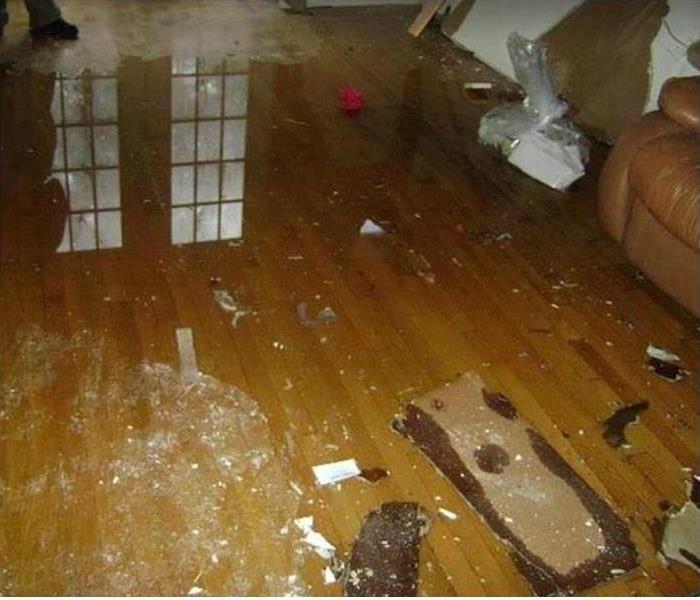 Our techs are ready 24/7, 365 days a year.
Our techs are ready 24/7, 365 days a year.
Threats from Water Damage Following Severe Weather
Severe weather is no stranger to the area, so homes must prepare for the possibility of water damage after these disasters. Our fast-responding SERVPRO team can assess the concerns a storm leaves behind and begin restoration.
What Water in Your Home Means
Water damage in Cambridge properties following a storm can mean several possible things. Issues that allow water or flooding to penetrate the property should get resolved as soon as possible. Water in your house after a storm can mean:
- Building Envelope Has Failed – Storms can damage your home's roof, siding, and other exterior elements, keeping the water from entering.
- Flooding Has Overwhelmed the Structure – Flash floods can be particularly forceful in their aggression towards homes, so doorways and other accessible openings can be exploited.
- Drainage and Diversion Issues – A condition as simple as a clogged gutter can force pooling water in these installations to overflow and pour down the side of the house, sometimes between the siding and plywood backing.
Cleaning Up Water Damage in The House
The first step in removing water damage in the house after a storm is clearing any pooling on the structure's floors. Flooding can be particularly concerning in this area, with several inches or even feet of standing water to face. We have multiple extraction devices like pumps and vacuums to overcome water removal needs.
Even with the surface water removed, many steps remain to return your home to pre-storm condition. Drying is also an essential component of the process, introducing tools like air movers and dehumidifiers to the equation for efficient evaporation and moisture regulation.
After a storm, your home can experience several types of water damage. We are mitigation and restoration experts to help when disaster strikes. Call SERVPRO of Cambridge / Belmont at (617) 864-7378.
Handle Storm Flood Damage in Cambridge with SERVPRO's Help
11/8/2022 (Permalink)
 When a flood hits your property, you need to call the technicians at SERVPRO.
When a flood hits your property, you need to call the technicians at SERVPRO.
Opt for Expert Storm Flood Damage Restoration in Cambridge
People living in areas free of flooding need help to understand the damage's significance. The floodwater brings debris, soil, sewage, refuse, or deceased animals. Moisture collecting in areas hidden from you can cause the growth of mold and other microbes on your fabrics, drywall, and carpets.
Flood damage is a source of stress, immense losses, and economic downfalls if professionals do not handle the restoration process. SERVPRO provides round-the-clock storm flood damage repair in Cambridge. We have well-trained and certified technicians. We are equipped with advanced equipment to handle any situation. Since water affects almost everything it comes into contact with, our SERVPRO team ensures the safety of the homeowners and all the residents by inspecting the following for damage: plaster, drywall, wood, insulation, floor coverings, framing, electrical wiring, HVAC, pipes, and appliances.
Our team considers factors like the water volume and the damage's severity to restore your home efficiently. To remove the odors the floodwater leaves behind, SERVPRO deodorizes the house, with the initial step involving the removal of moisture. Some of the deodorization methods we use include:
- Direct spraying where discoloration is not likely to happen or where it does not matter.
- Wet fogging. Our SERVPRO technicians use Ultra-Low Volume (ULV) Foggers to dispense solvent-based and water-based deodorizers.
- Hot/thermal dry fogging. We use dry or thermal fogging equipment to dispense solvent-based deodorants.
- Air scrubbers to remove chemicals, odors, and airborne particles from the air.
- Venting fan boxes are high-velocity ventilators that shorten the time required for occupants to return.
Deodorization works to improve indoor air quality to make it easier for you to live in the house. Please don't allow the floodwater to sit on your home for long since it can incur more damage, making it difficult or impossible to restore.
For a fast and efficient restoration process, contact SERVPRO of Cambridge / Belmont at (617) 864-7378. We're Faster To Any Size Disaster.
SERVPRO Provides Flood Damage Cleanup in Cambridge
7/11/2022 (Permalink)
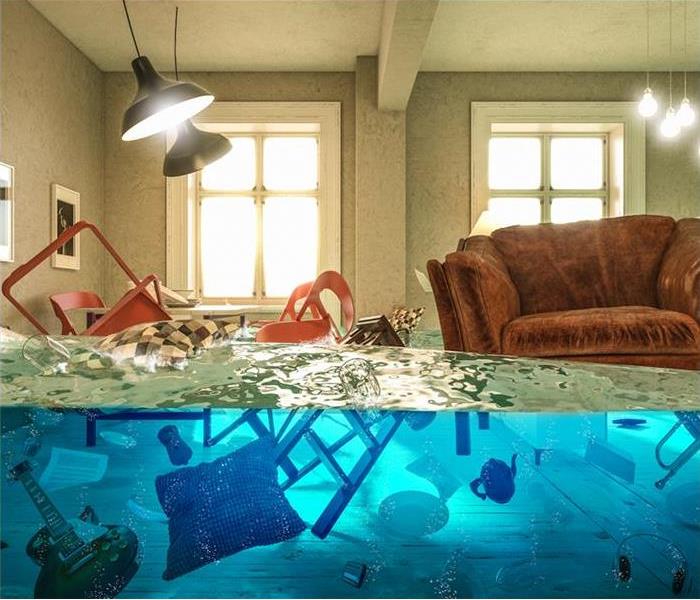 When flooding hits your Cambridge area, you need to call the technicians at SERVPRO.
When flooding hits your Cambridge area, you need to call the technicians at SERVPRO.
Protecting Your Valuables After Flood Damage in Cambridge – Call SERVPRO
Floods and storms can cause a great deal of damage to homes and businesses in Cambridge. The wind and flood waters can introduce water and contaminated debris into basements and living areas. After the storm, residents are left with so much damage they hardly know where to begin. After they ensure their family and pets are okay, many people are concerned about valuables such as jewelry, electronics, and other items that hold a great deal of sentimental value.
SERVPRO technicians can help with flood damage cleanup in Cambridge homes. Our team can be onsite to help with cleanup and begin restoration within four hours after your call to our office. We provide:
- Emergency roof coverings.
- Board-up of windows and doors.
- Emergency repairs to prevent further damage to your home.
We carefully remove debris and damaged contents as we clear your home, and begin cleaning, disinfection, and drying your contents and structure.
Homeowners and residents are also concerned about valuables such as jewelry and mementos. Depending on the amount of damage and the safety of residents, some may be able to enter the home to recover jewelry, valuable documents, pictures, and mementos.
SERVPRO technicians wearing appropriate personal protective equipment can also enter the home and recover these valuables. Non-porous items such as jewelry can be cleaned, disinfected, and returned to the owners. Documents and pictures are carefully cleaned and dried.
While these items can be recovered, they cannot be returned to their original condition.
In addition to jewelry and document recovery provided by SERVPRO, we also offer the following services to clients dealing with flood water damage:
- Water removal services
- Water damage repairs and restoration
- Repairing a leaking roof from storms
Call SERVPRO of Cambridge / Belmont for flood damage cleanup services. We cover Cambridge and nearby areas. We can help 24/7. Call (617) 864-7378.
Flood Damage Causes Unique Problems for Cambridge Homeowners
6/15/2022 (Permalink)
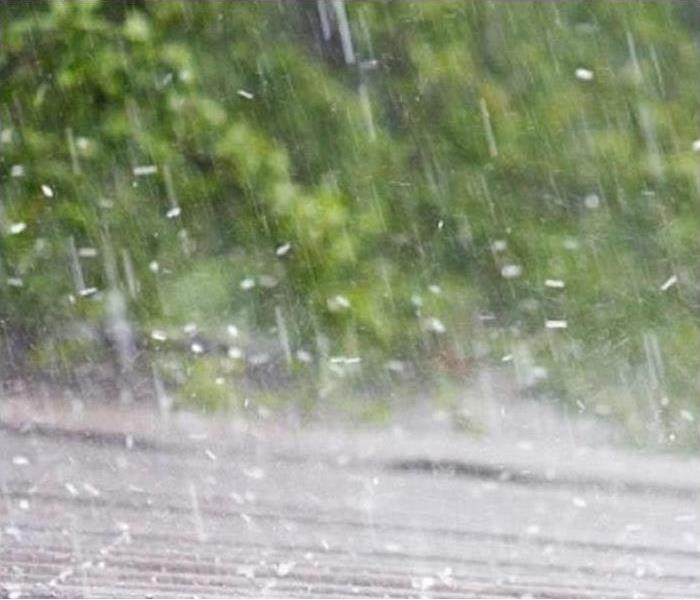 The Cambridge area, routinely experiences severe stormy weather. SERVPRO is your trusted choice for complete storm damage restoration.
The Cambridge area, routinely experiences severe stormy weather. SERVPRO is your trusted choice for complete storm damage restoration.
Cambridge Flood Damage Takes Special Remediation
Coastal Massachusetts, including the Cambridge area, routinely experiences severe stormy weather. This weather occurs throughout the year and can come in the form of Nor’easters or hurricanes during the warmer months. Regardless of what causes it, the related storm surges often push up the Charles River, bringing unique, flood-related problems.
SERVPRO is mindful of the ever-present threat of flood damage in Cambridge and knows how to mitigate and remediate such issues. This knowledge is impressive, given the unique damage flooding events can cause and how complex flood restoration work often is. As a top biohazard cleaning company, SERVPRO is a firm experienced in all aspects of flood cleanup, from water removal services and water damage repairs to sewage cleanup. Some of the flood damage our crews have cleaned up and restored includes:
- Rooms, basements, or other floors of homes filled with feet of refuse, chemical, and feces-polluted water that have rendered these areas unlivable
- Areas of homes where floodwaters have left behind feet or inches of debris and silt
- Structural elements, like floors, walls, and ceilings, that are moldy, compromised by water saturation or dry rot, or are unsound for other reasons
- Homes filled with repulsive, flood-related odors that are difficult to eliminate
A few of the ways we clean up and fix these issues are by:
- Rapidly extracting floodwaters from homes with powerful extractors
- Expertly drying interiors with air mover, dehumidifier, and Injectidry system networks
- Fogging floodwater-affected areas and materials with state-of-the-art foggers that emit industrial-grade antimicrobials and deodorants
As you can clearly see, your helpful neighbors at SERVPRO of Cambridge/Belmont can help you overcome even the worst flood damage. Our skilled technicians have the specialized knowledge and equipment necessary to get your job done quickly and effectively. Call us anytime at (617) 864-7378 for assistance.
Flood Damage Poses Invisible Threats to Your Cambridge Home
4/22/2022 (Permalink)
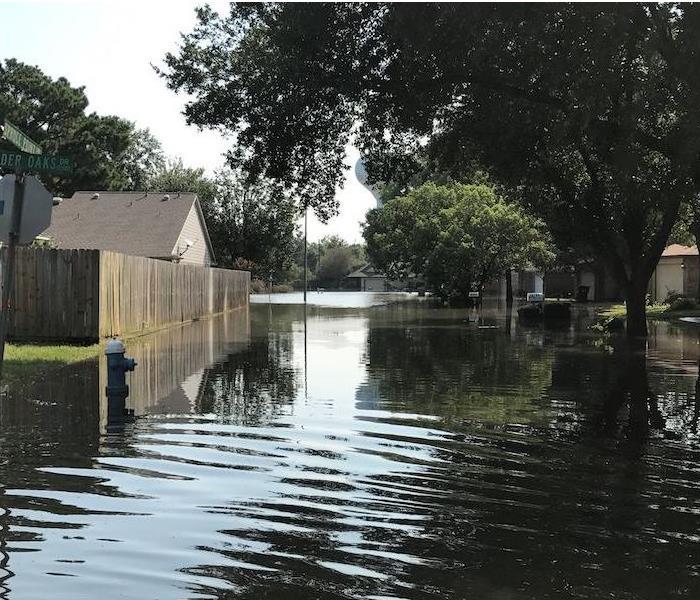 Don’t let your property be a victim of flood damage, SERVPRO of Cambridge/Belmont is only a call away.
Don’t let your property be a victim of flood damage, SERVPRO of Cambridge/Belmont is only a call away.
Cambridge Flood Damage Is Exacerbated by Dangerous, Stormwater-Borne Microbes
Cambridge homeowners generally fixate on the visible effects of flooding on their residences. However, the invisible impacts of waterborne microorganisms carried by floodwaters can often cause as much trouble over time as physical contact with the water itself. It is for this reason that effective microbial remediation is necessary for complete flood damage restoration.
Cambridge flood damage cleanup and repair firms like SERVPRO are experts at eliminating flood-related microbial threats from homes. Our biohazard remediation and flood restoration professionals are well-versed in sewage cleanup techniques, water removal services, and water damage repairs. Moreover, they are thoroughly educated on the various microscopic pests that can impact residences after a flooding event. As a result, SERVPRO technicians know how to spot potential problems associated with the following microorganisms and clean them up:
- Viruses like norovirus and Hepatitis A & E, which are the simplest floodwater microbes, originate from human and animal excrement and can multiply and cause health effects in residents over time.
- Bacteria, including Salmonella Typhi and Clostridium Tetani, which live off absorbed materials in their environment, are usually single-celled organisms found in water, soil, and other organic matter and may cause effects like viruses.
- Fungi like mold, mildew, and Serpula Lacrymans, which are generally multi-celled microbes that digest environmental materials for nutrients rather than eating and may cause one or more of the following issues: discoloration; disintegration of materials like drywall; foul odors; and dry rot in wooden materials
Mindful of these potential, yet oft-overlooked, flood-related dangers to your residence, you should be prepared to call a reputable flood damage cleanup firm like SERVPRO of Cambridge/Belmont if deluging stormwaters ever impact your home. So, whenever your home suffers flooding, don’t hesitate to call us at (617) 864-7378 for assistance.
The 4 Things That Often Cause Flooding | SERVPRO® of Cambridge/Belmont
4/5/2022 (Permalink)
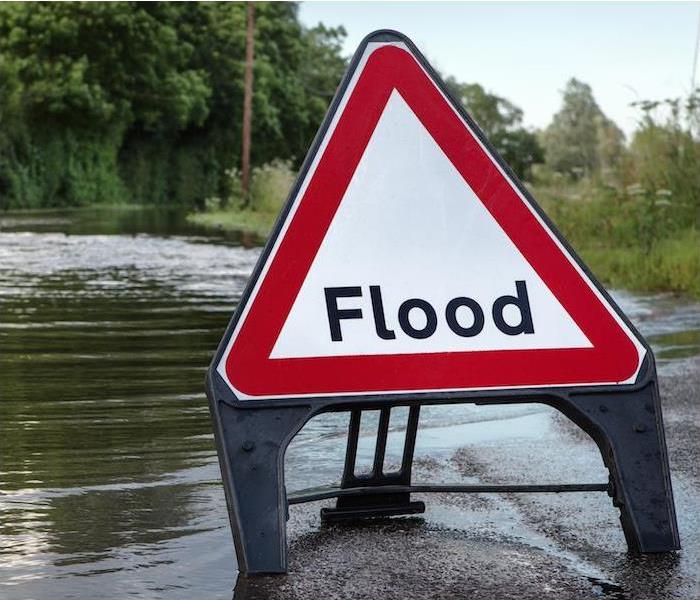 Regardless of the cause of the flooding, SERVPRO of Cambridge/Belmont has the team to help you recover from any disastrous event.
Regardless of the cause of the flooding, SERVPRO of Cambridge/Belmont has the team to help you recover from any disastrous event.
Natural disasters of any type can be devastating. Whether you are dealing with tornadoes, hurricanes, severe thunderstorms or something else, they can all be quite dangerous. However, most people are surprised to learn that flooding is the most common and the most deadly type of natural disaster within the United States.
There can be a lot of variation in the damage that flooding causes, but the types of flooding and the things that make it occur are often the same—and that is what we will be examining today.
3 Main Kinds of FloodingFlash floods, as the name implies, occur rather rapidly. Typically caused by heavy rainfall, either from a large storm cell or a slow-moving one, flash floods occur when the ground is no longer able to absorb an adequate amount of water. Flash flooding can impact any area, and often the water will move swiftly enough to carry away objects such as dumpsters and cars in its path.
River floods happen when a riverbank cannot contain the water within the river—this is common after heavy rainfall or in the spring when snow begins to melt. River floods occur when the river overflows, flooding the surrounding area.
Coastal floods are similar in nature to river floods, but they occur in bodies of water along the coast. Typically due to hurricanes or other types of storm surges, coastal floods occur when water along the coast rises rapidly and overwhelms its borders.
4 Ways Flooding Often OccursHeavy rainfall. When storms dump a large amount of rain on an area, all types of flooding become likely. Flash floods are the most common type of flood, and they often occur in areas with large swaths of paved ground, such as cities and suburban areas. Heavy rainfall can also cause rivers or coastal waters to overfill.
Oceanic activity. The rise of ocean tides, due to rainfall, hurricanes or other storms, can lead to coastal flooding that impacts areas bordering the water.
Dams and levees failing. As seen in 2005 events surrounding Hurricane Katrina, the failure of a dam or levee is quite devastating. These structures are sometimes overwhelmed due to a high volume of water, and are thus prone to giving way and causing major destruction.
Snowmelts and ice dams. Throughout the winter, snow and ice can pile upon one another and lead to quite a bit of moisture buildup when warm weather finally comes along. This can lead to flooding on its own, but also cause ice jams, which can cause secondary flooding along riverbanks.
Regardless of the cause of the flooding, SERVPRO has the tools and teams to help your home or business recover from its disastrous effects. Contact us anytime when flooding or water damage makes a mess in your life.
What Will Spring Weather Bring? | SERVPRO® of Cambridge/Belmont
3/4/2022 (Permalink)
 Extreme temperature changes can lead to the possibility of severe weather. SERVPRO of Cambridge/Belmont is here if you experience any damage.
Extreme temperature changes can lead to the possibility of severe weather. SERVPRO of Cambridge/Belmont is here if you experience any damage.
The United States comes in at a close second as one of the largest countries with only Russia and Canada being larger!
Because our country is so large, that means that seasonal weather can look a lot different depending on where you are. With our nation being so spread out, it can create different weather patterns for certain areas, which in turn creates different weather threats.
As the spring season is drawing near, it means that the cold and warm air masses will collide, causing weather hazards. With the official start of spring on March 20 quickly approaching, let’s take some time to review the weather:
Let’s get started on our first region, the Pacific Northwest. This region will experience heavy rains during the spring months, which can cause flooding or water damage. The higher elevations also might have to worry with flooding, but from melting snow or ice, which clearly can cause problems of its own.
Moving to the Upper Midwest and Northeast regions, these ares are still experiencing winter weather. In fact, this region is likely to still be dealing with snowstorms or blizzards until late spring or early summer. We’re intimately acquainted with this weather pattern! While the arrival of spring might bring a little more warmth, we usually don’t fully warm up until summer.
As we move on to the West Coast, this region is experiencing opposite of what we see here. On the West Coast, they may be faced with excessive heat waves. When temperatures get intensely high and the air remains dry, it puts the area at risk of wildfires and also endangers people.
The middle part of the United States, from Iowa down to Texas, has drier air, but it’s very windy! This region has to prepare for windstorms, derechos and wildfires. Part of the Midwest is also home to what’s known as “Tornado Alley,” where tornadoes are incredibly common.
Last but certainly not least, we have the Southeast region, which can experience severe weather hazards during the spring. Intense thunderstorms and even tornadoes are common in the South this time of year, and states along the coast also have to keep an eye out for early-season hurricanes.
So, as you can see, with the United States being so large and spread out, weather patterns can look extremely different. That’s why you must always stay prepared and aware about what is going on in your area!
If extreme weather leaves you with damage from water, fire or other elements, help is a click away. Contact SERVPRO for fast, expert recovery.
What SERVPRO Means by “Full Service” | SERVPRO® of Cambridge/Belmont
2/15/2022 (Permalink)
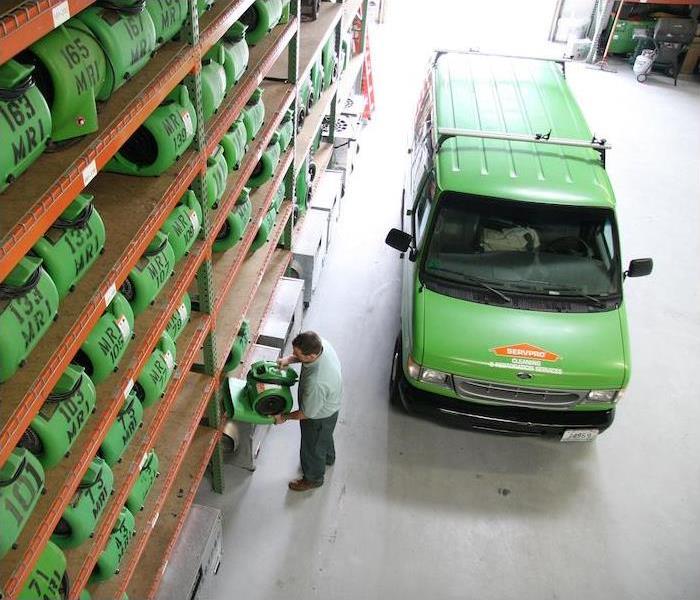 When you need cleanup and recovery of any kind, you can trust SERVPRO of Cambridge/Belmont to get the job done.
When you need cleanup and recovery of any kind, you can trust SERVPRO of Cambridge/Belmont to get the job done.
If you drive by a neighbor’s home and see carpets on the side of the house along with a green SERVPRO truck sitting in the driveway, it’s safe to assume that they had some kind of disaster happen to them.
We are well-known as being a cleaning company, but what we want people to understand is that we are actually a full-service company! So if you need cleaning, restoration or even reconstruction, you can rest assured that we will see you through all of it.
Let’s take a deeper look into what SERVPRO provides for home and business owners:
Water damage recovery. If you suffer from some type of water damage, you can bet that we will be there to help in no time. Water damage requires a quick cleanup, and we are available 24⁄7 so that we can provide that for you.
Fire damage recovery. There is a fire reported every 23 seconds here in the United States. As we’ve seen for ourselves, fires can do a lot of damage to a home or business, but that’s why we know to bring in big help!
Mold removal. Mold damage can creep up on you in no time, and sometimes without you even noticing! It can threaten the structure of your home, and it spreads quickly. That’s why you should leave that cleanup to the professionals.
Storm recovery. Whether you’ve been hit by a tornado or high winds, the damage weather can do to a home or business can be quite catastrophic! We are here and ready to help restore or even reconstruct your home or business following storm damage.
Commercial needs. While we are best known for residential services, we provide the same services (plus a few more) to business owners, too. We work to give your business a shiny look so that your customers and employees see that you care about them.
General cleaning. Sometimes, life can be hectic, and general cleaning can be difficult to keep up with. That’s why we provide these services, along with carpet, curtain and upholstery cleaning.
Specialty cleaning. Businesses sometimes need specialized services for things like biohazard cleanup or document restoration. No matter what it is, we know that if it can get dirty, we can get it clean.
Construction. There are times that a home or business is past the restoration process, and the only option left is reconstruction. And while we understand that is stressful, we will provide you with services to help you get through it, and make your home or business look just as good as before.
Add 24-hour service and an easy insurance process to all this, and the picture becomes clear—when you need cleanup and recovery of any kind, you can trust SERVPRO to get the job done.
Be Aware of Storms | SERVPRO® of Cambridge/Belmont
11/15/2021 (Permalink)
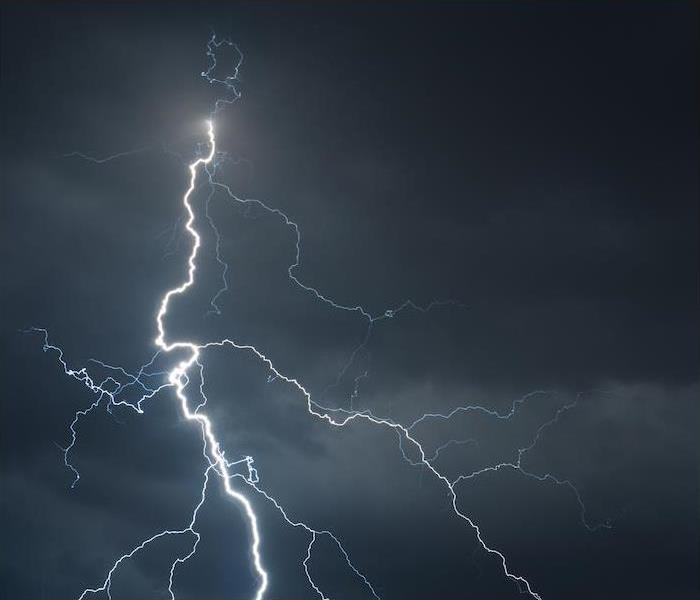 If storms cause damage to your home or business, SERVPRO of Cambridge/Belmont is on the line, ready to make things right.
If storms cause damage to your home or business, SERVPRO of Cambridge/Belmont is on the line, ready to make things right.
Stay Alert
Storms may be more common in summer but that doesn’t mean you shouldn’t take them less seriously. Storm alerts are issued for a reason so take notice.
Consider canceling or postponing outdoor events if bad weather is in the forecast.
Local meteorologists try to provide the most accurate forecasts possible. Get yourself an NOAA Weather radio if you think a power outage could happen.
Plan to stay home and off the roads if storms are in the forecast.
Consider tree maintenance to remove dead or low hanging limbs that could be susceptible to strong winds. Also, store outdoor lawn furniture in a secure location.
Unfortunately, with all of these precautions, people still die each year from storm-related weather. Don’t take storms for granted.
If lightning accompanies the rain, stay indoors for at least 30 minutes after the last thunder you hear. Lightning can strike 10 miles away from the storm.
Stay away from windows, and don’t shower or bathe during a thunderstorm. Consider unplugging sensitive electronics.
Make sure you have an emergency kit prepared, and know the evacuation route for your area.
If flooding materializes, stay on high ground and avoid flood water if possible.
Don’t attempt to drive or walk through moving water, as it can easily knock a person off their feet. Flood waters can also conceal hidden road damage, and that could be catastrophic for you and people in your car.
There are any number of dangers that can come into play in a thunderstorm, and it’s always best to be cautious and put things on hold until storms safely pass. If storms cause damage to your home or business, SERVPRO is on the line, ready to make things right again.
Know what To Do If A Storm Catches You Off Guard
9/8/2021 (Permalink)
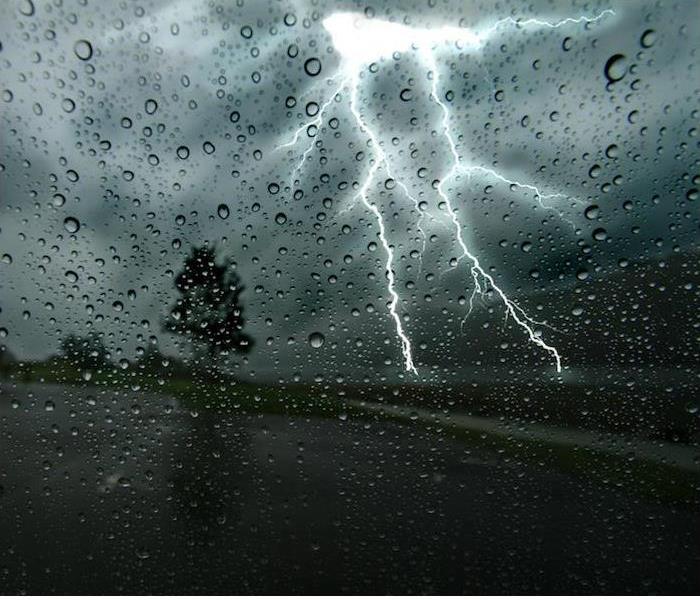 We can help you during your time of need
We can help you during your time of need
When the sky is clear and the weather is warm, it seems silly to think about thunderstorms ruining the fun—but unfortunately, this happens quite often on hot, humid days, as that creates the ideal condition for a sudden storm to form.
When storms catch people off-guard, they are often extra dangerous because people are not sure of what to do. With these tips, you can make sure you are prepared for a storm anywhere.
Make Sure You Are Prepared for a Storm Anywhere
Know your options for shelter. When you hear that a storm is a possibility and you are somewhere you can wait out the threat, this would be the ideal thing to do. That being said, when storms come up suddenly, this will not always be an option. You can set up shelter in your vehicle with the proper guidelines in mind, enabling you to wait out the storm anywhere you are.
Practice electrical safety. Claps of thunder are caused by lightning strikes, so any thunderstorm has the potential to cause lightning damage. If you are sheltering in a building, unplugging your electronics can help prevent damage from a power surge in case lightning strikes the building. Surge protectors are also a smart thing to invest in, both for your home and your office, in case you are not around when a storm starts.
Avoid direct contact with concrete. While concrete structures do have sturdiness going for them, they also pose risks when it comes to lightning strikes due to their metal framework. When lightning strikes a concrete building, the electricity can transfer from the metal and through the concrete, so be careful to not sit or lean against any concrete surfaces during a storm.
Stay indoors for at least 30 minutes. If you are interrupted by a thunderstorm, you will likely want to get back to your summer fun as soon as you can, but it is important to give yourself ample time in your shelter spot. Lightning can travel nearly 30 miles from the center of a storm cell, so experts recommend waiting at least 30 minutes before heading back outside.
If your home sustains damage due to a storm, you can count on us to help. Contact us at any hour to learn more about our storm restoration process.
We Are Here For You After A Storm
8/20/2021 (Permalink)
 You can call us 24 hours a day, 365 days a year to report your damage and receive exceptional service
You can call us 24 hours a day, 365 days a year to report your damage and receive exceptional service
Severe weather is a powerful thing, and it can cause significant damage to homes, property and businesses. In recent years, the cost of treating storm damage has continued to rise nationwide, but not treating it can lead to much larger problems with your structures later on.
Choosing the right restoration company is one of the most important things you can do if you have sustained storm damage. They will be responsible for taking care of your building and belongings, as well as making sure that every aspect of the damage is thoroughly handled.
Picking the right company for the job will provide you with great peace of mind and ensure that any damage is properly addressed.
Why We Have Become Leaders in Storm Restoration
Our reputation has been earned over time. We are proud to be not only a member of the local community but also to be considered a leader in the restoration industry as a whole. We have worked hard to earn our reputation, and we are proud of it. After disasters, there are many scams afoot that take advantage of those who are vulnerable, but when you trust us, you can be certain you are getting the best in the business.
Our resources allow us to take on more jobs. If there is a large area that is impacted by a storm, you do not want a company that is struggling to keep up with demand to be in charge of your restoration. Thanks to our national partners, we can handle disasters that are any size with the same service and expertise we always do. When there is a large storm, we can call for backup in the way of extra resources and workforce to handle the issues.
Our emergency response is truly 24⁄7. Severe weather never takes a day off, so we won’t either. You can call us 24 hours a day, 365 days a year to report your damage and receive exceptional service, so as soon as you discover you need us, we can be there. No matter what time you discover you have received damage, you can call us and be certain you will receive a rapid response from our expert technicians.
When you have damage from a storm to your home or commercial building, you can always depend on us to handle it. Contact us at any hour to see our exceptional service in action.
Storms and Sewage Back Ups
8/12/2021 (Permalink)
 City Sewer systems can get overwhelmed causing back up in your home.
City Sewer systems can get overwhelmed causing back up in your home.
The heavy rains that occurred in the Cambridge/Belmont area caused not only flooding but also many sewage back- ups. The town & cities sewage system gets overwhelmed causing the sewage to flow into basements through toilets and sinks. When a storm drain suffers a partial or complete blockage, rain water gets trapped in the pipes and must go somewhere. Unfortunately, the only exit point is the pipe servicing your home that connects to the sewer line. With nowhere left to go it goes up through your pipe, pushing whatever refuse and filth it’s carrying into your basement and other areas of your home. Contact your local plumber to install a backwater valve to prevent this from happening to you! If your basement gets flooded or has sewage issues, please call SERVPRO of Cambridge/Belmont (617) 864-7378 to assist you. Did you know that SERVPRO of Cambridge/Belmont also helps Commercial and Industrial customers?
A Look at the Types of Damage Associated With Thunderstorms | SERVPRO® of Cambridge/Belmont
6/15/2021 (Permalink)
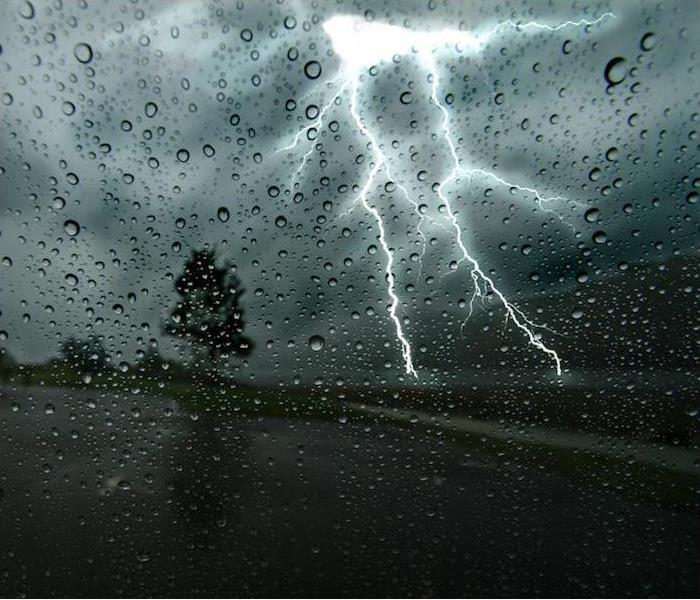 Thunderstorms can pop up at any moment. Contact SERVPRO of Cambridge/Belmont if you experience any damage.
Thunderstorms can pop up at any moment. Contact SERVPRO of Cambridge/Belmont if you experience any damage.
Thunderstorms are quite a dangerous weather event, and though they occur frequently, it is important to not become immune to the threats that they pose. Every thunderstorm brings the potential for injury and damage along with it, and between hail, high winds, heavy rains and flooding potential, there are lots of issues that can be present each time a storm happens.
Every storm that contains thunder and lightning has the potential to be dangerous, as lightning strikes and heavy rain are major hazards. Additionally, a thunderstorm can become severe when winds over 58 miles per hour and hail over one inch are present, posing even more possible hazards to those in the path of the storm.
Various Ways That Thunderstorms Can Cause Damage
Damage and injury from lightning strikes. Every thunderstorm will also contain lightning, as thunder and lightning always go hand in hand. Lightning strikes are responsible for over 300 injuries each year, which does not include how often they cause structural fires or fell trees that cause additional damage.
Property damage due to hail. Though hail may seem like a minor occurrence compared to something like lightning, its damages can be quite far reaching. People without adequate shelter can receive injuries from hail, and it can also dent cars, cause damage to homes that lead to water entry and lead to leaking roofs. Large hail is extremely dangerous because of the sheer speed with which it can fall.
Harm from flash flooding. Though most people consider flooding something that is only likely to happen around bodies of water, with flash flooding, it can be a threat nearly anywhere. Flash flooding is often caused when rainfall is heavy and drainage systems or ditches get backed up, which can quickly lead to standing or flowing water. Flash floods are particularly dangerous because of their force, which can knock people over and carry cars away in its tide.
Thunderstorms are dangerous and can cause significant damage to homes or commercial spaces. If you have damage due to a thunderstorm, you can count on us to help. Contact us 24⁄7 for more information about our storm restoration practices.
Ice Dams - What You Should Know
12/14/2020 (Permalink)
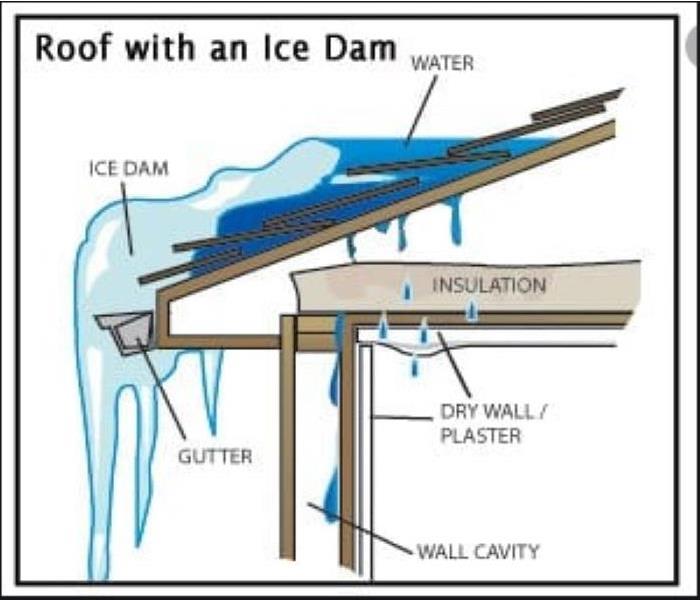 If you have water damage from Ice Dams, please call SERVPRO of Cambridge/Belmont (617) 864-7378
If you have water damage from Ice Dams, please call SERVPRO of Cambridge/Belmont (617) 864-7378
Ice dams form when melted snow refreezes at roof edges. Anyone who has lived in cold climates has seen ice dams. However, most of us don’t stop to understand why these ice bands form until they damage our homes.
Three things are required for an ice dam to form: snow, heat to melt the snow and cold to refreeze the melted snow into solid ice. Ice dams can form when as little as 1 or 2 inches of snow accumulates on a roof – if the roof is poorly insulated and air sealed, and the snowfall is followed by several days of sub-freezing temperatures. Ice dams develop as snow on the upper part of the roof melts. Water runs down the roof slope under the blanket of snow and refreezes into a band of ice at the roof’s edge creating a “dam”. Additional snow-melt pools against the dam and eventually leaks into the building through the roof or roof trim.
The reason ice-dams form along the roof’s lower edge, usually above the overhang, is straight-forward. The upper roof surface is at a temperature that is above freezing. And the lower part of the roof surface (along the eaves) is below freezing. The upper roof surface is located directly above the living space. Heat lost from the house warms this section of the roof, melting snow in this area. During periods of sub-freezing temperature the lower regions of the roof deck remain at sub-freezing ambient temperatures. Roof overhangs are not warmed by indoor heat-loss.
Deeper snow and cold temperatures increase the likelihood and size of ice dams. Every inch of snow that accumulates on the roof’s surface insulates the roof deck a little more, trapping more indoor heat beneath the roof deck and warming the roof sheathing. Each inch of snow has an R-value of approximately 0.5 – 1. The worst ice dams occur when deep snow accompanies cold weather. Here is an example to provide a sense of scale: A poorly insulated and unvented R-20 cathedral roof with 10 inches of snow can result with serious ice damming. In this example, 10 inches of snow adds ~between R-5 and R-10 to the roof system resulting in a total roof R of 25 – 30. The layer of snow holds indoor heat below the sheathing and could warm the roof sheathing above freezing in the area over the living space. If the inside temperature is 70 degrees and the outside 20 degrees (50 degree differential), the temperature of the roof sheathing would be between 5/25 and 10/30 of the way from 20 degrees toward 70 degrees. In other words, the roof should temperature should be between 30 and 37 degrees over the living space. Snow will probably melt under these conditions. Yet, the temperature of the roof over the unheated overhangs is 20 degrees, the same as the outdoor temperature. The melt water will freeze when it reaches that part of the roof. Deeper snow makes things worse. More insulation makes the situation better. You can do the math for a variety of snow depths and various indoor/outdoor temperature conditions to get a sense of how the variables are related. The trick is to keep the entire roof below freezing if possible. Roof venting helps and is discussed below.
Why Our “Restore First” Mentality Is Best for Customers | SERVPRO® of Cambridge/Belmont
10/23/2020 (Permalink)
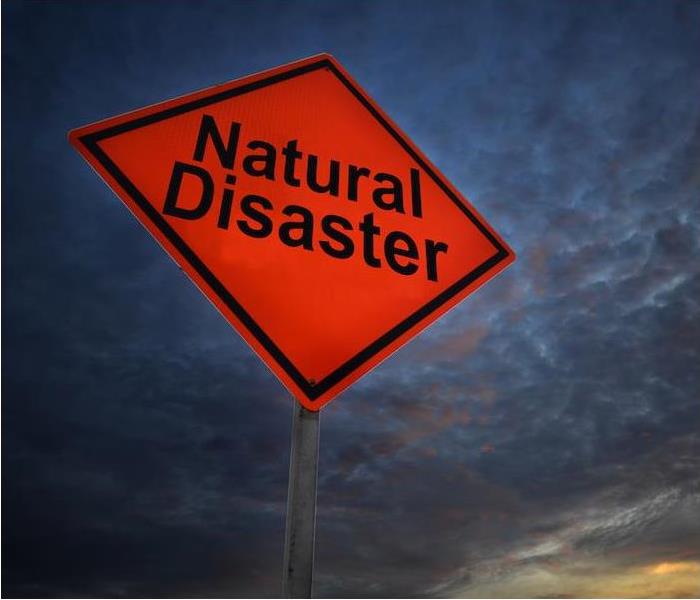 Have you sustained property damage and feeling overwhelmed? We are here to help, contact SERVPRO of Cambridge/Belmont.
Have you sustained property damage and feeling overwhelmed? We are here to help, contact SERVPRO of Cambridge/Belmont.
If your home sustains damage for any reason, it can be a frustrating and fraught time for your entire family. There are many emotions that people will cycle through after a fire or other disaster, and having to go through the process of handling the damage can further complicate the recovery process.
While there are always difficulties to consider throughout the recovery period, having a good restoration company on your side can truly make all the difference.
We will work with you and your insurance company to make the entire procedure as seamless as possible, and with our restoration-first mentality, we will do our best to preserve your belongings so you do not have to replace them.
How Our Restoration-First Mentality Helps Our Clients
We can help you save money on your insurance. Homeowners insurance is designed to help you cover the cost of losses in case of many types of damage, but filing a claim can also raise your premium tremendously. In the event of water damage, for example, the average claim is over $10,000. We can help lower the cost you have to claim with insurance by restoring objects where possible.
We can protect your sentimental items. We have invested in some of the most advanced restoration equipment available to us, which is what enables us to save items that may seem like a lost cause. In the past, we have been able to restore irreplaceable objects such as family photos, documents and art, as well as valuables such as electronics. Some things can’t be replicated, which is why we do our best to keep these sentimental objects intact.
We make sure your home feels like home again. As we have helped many people in the community with losses and damage, we understand all the complex emotions involved. To help make the return home easier, we focus primarily on restoring your house to its pre-damaged state and placing your belongings just how they were before the damage occurred. This will help your house feel like home again so your family can focus on healing.
If you have damages and are feeling overwhelmed, we are here to help. You can call us as soon as you need to in order to begin the restoration process. Contact us today to learn more.
What Sets Our Storm Restoration Methods Apart? | SERVPRO® of Cambridge/Belmont
9/1/2020 (Permalink)
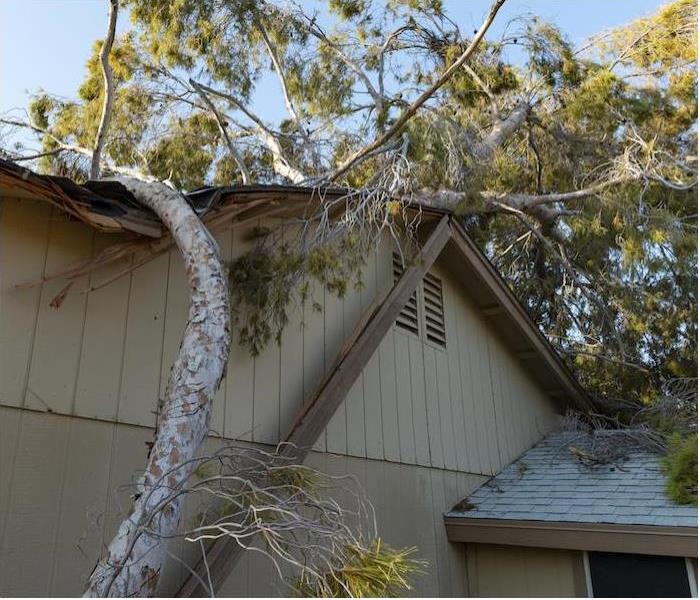 Choosing the right restoration company is crucial to getting things back to normal. Call SERVPRO of Cambridge/Belmont to set up an appointment.
Choosing the right restoration company is crucial to getting things back to normal. Call SERVPRO of Cambridge/Belmont to set up an appointment.
Severe weather is a powerful thing, and it can cause significant damage to homes, property and businesses. In recent years, the cost of treating storm damage has continued to rise nationwide, but not treating it can lead to much larger problems with your structures later on.
Choosing the right restoration company is one of the most important things you can do if you have sustained storm damage. They will be responsible for taking care of your building and belongings, as well as making sure that every aspect of the damage is thoroughly handled.
Picking the right company for the job will provide you with great peace of mind and ensure that any damage is properly addressed.
Why We Have Become Leaders in Storm Restoration
Our reputation has been earned over time. We are proud to be not only a member of the local community but also to be considered a leader in the restoration industry as a whole. We have worked hard to earn our reputation, and we are proud of it. After disasters, there are many scams afoot that take advantage of those who are vulnerable, but when you trust us, you can be certain you are getting the best in the business.
Our resources allow us to take on more jobs. If there is a large area that is impacted by a storm, you do not want a company that is struggling to keep up with demand to be in charge of your restoration. Thanks to our national partners, we can handle disasters that are any size with the same service and expertise we always do. When there is a large storm, we can call for backup in the way of extra resources and workforce to handle the issues.
Our emergency response is truly 24⁄7. Severe weather never takes a day off, so we won’t either. You can call us 24 hours a day, 365 days a year to report your damage and receive exceptional service, so as soon as you discover you need us, we can be there. No matter what time you discover you have received damage, you can call us and be certain you will receive a rapid response from our expert technicians.
When you have damage from a storm to your home or commercial building, you can always depend on us to handle it. Contact us at any hour to see our exceptional service in action.
What Sets Our Storm Restoration Methods Apart | SERVPRO® of Cambridge/Belmont
8/11/2020 (Permalink)
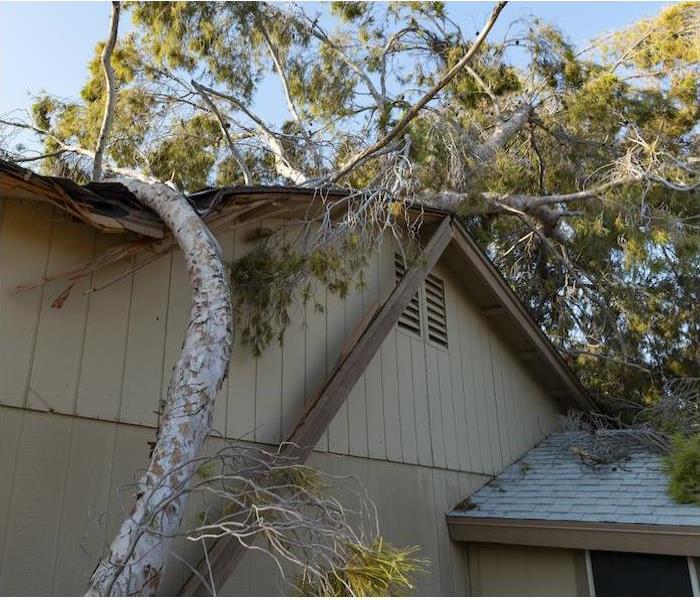 Choosing the right restoration company is crucial to getting things back to normal. Call SERVPRO of Cambridge/Belmont to set up an appointment.
Choosing the right restoration company is crucial to getting things back to normal. Call SERVPRO of Cambridge/Belmont to set up an appointment.
Severe weather is a powerful thing, and it can cause significant damage to homes, property and businesses. In recent years, the cost of treating storm damage has continued to rise nationwide, but not treating it can lead to much larger problems with your structures later on.
Choosing the right restoration company is one of the most important things you can do if you have sustained storm damage. They will be responsible for taking care of your building and belongings, as well as making sure that every aspect of the damage is thoroughly handled.
Picking the right company for the job will provide you with great peace of mind and ensure that any damage is properly addressed.
Why We Have Become Leaders in Storm Restoration
Our reputation has been earned over time. We are proud to be not only a member of the local community but also to be considered a leader in the restoration industry as a whole. We have worked hard to earn our reputation, and we are proud of it. After disasters, there are many scams afoot that take advantage of those who are vulnerable, but when you trust us, you can be certain you are getting the best in the business.
Our resources allow us to take on more jobs. If there is a large area that is impacted by a storm, you do not want a company that is struggling to keep up with demand to be in charge of your restoration. Thanks to our national partners, we can handle disasters that are any size with the same service and expertise we always do. When there is a large storm, we can call for backup in the way of extra resources and workforce to handle the issues.
Our emergency response is truly 24⁄7. Severe weather never takes a day off, so we won’t either. You can call us 24 hours a day, 365 days a year to report your damage and receive exceptional service, so as soon as you discover you need us, we can be there. No matter what time you discover you have received damage, you can call us and be certain you will receive a rapid response from our expert technicians.
When you have damage from a storm to your home or commercial building, you can always depend on us to handle it. Contact us at any hour to see our exceptional service in action.
Flooding & Back ups after Heavy Rain
7/31/2020 (Permalink)
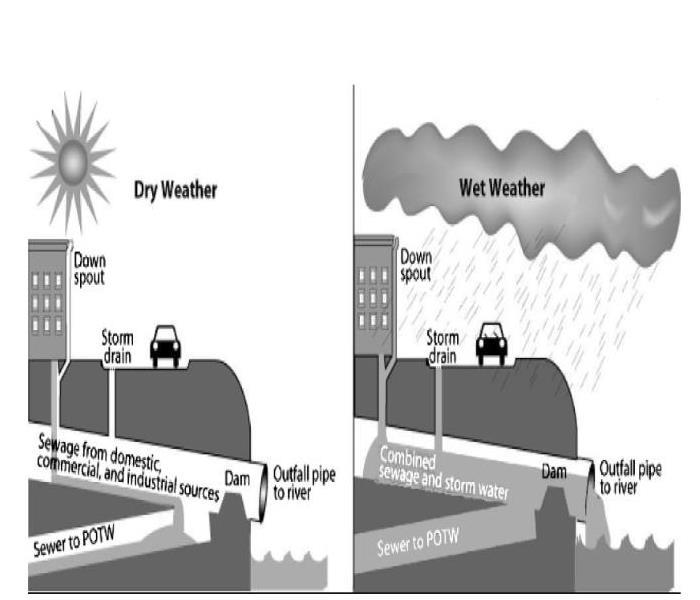 city sewage diagram
city sewage diagram
The heavy rains that occurred in the Cambridge/Belmont area caused not only flooding but also many sewage back- ups. The town & cities sewage system gets overwhelmed causing the sewage to flow into basements through toilets and sinks. When a storm drain suffers a partial or complete blockage, rain water gets trapped in the pipes and must go somewhere. Unfortunately, the only exit point is the pipe servicing your home that connects to the sewer line. With nowhere left to go it goes up through your pipe, pushing whatever refuse and filth it’s carrying into your basement and other areas of your home. Contact your local plumber to install a backwater valve to prevent this from happening to you! If your basement gets flooded or has sewage issues, please call SERVPRO of Cambridge/Belmont (617) 864-7378 to assist you. Did you know that SERVPRO of Cambridge/Belmont also helps Commercial and Industrial customers?
24 Hour Emergency Water Damage Service
7/31/2020 (Permalink)
 24 Hour Emergency Service. We are here to help!
24 Hour Emergency Service. We are here to help!
24 Hour Emergency Water Damage Service
SERVPRO of Cambridge/Belmont is available 24 hours a day for water emergencies, large or small. When you are dealing with water damage, immediate action is crucial. A delay of just a few hours can greatly increase the severity of the water damage.
Call SERVPRO of Cambridge/Belmont Today - (617) 864-7378
We understand that when you call us, you may be feeling confused, stressed, and vulnerable. You need an expert to guide you through this crisis. SERVPRO of Cambridge/Belmont has the specific water damage training and experience to help you through this tough time. We specialize in water damage restoration—in fact, it's the cornerstone of our business.
What to Expect
When you call, we will ask several questions regarding your water damage emergency. These questions will help us determine what equipment and resources to bring, including how many trained SERVPRO Professionals may be needed.
Our SERVPRO Representative will ask several questions:
Your name and contact information
Your insurance information (if applicable)
The street address of the water-damaged home or business
When did the flooding or water damage occur?
What caused the water damage (if known)?
Is there electricity available (on-site)?
About SERVPRO of Cambridge/Belmont
SERVPRO of Cambridge/Belmont specializes in the cleanup and restoration of residential and commercial property after a fire, smoke or water damage event. Our staff is highly trained in property damage restoration. From initial and ongoing training at SERVPRO’s corporate training facility to regular IICRC-industry certification, rest assured our staff is equipped with the knowledge to restore your property.
Know What to Do No Matter Where a Storm Catches You | SERVPRO® of Cambridge/Belmont
7/14/2020 (Permalink)
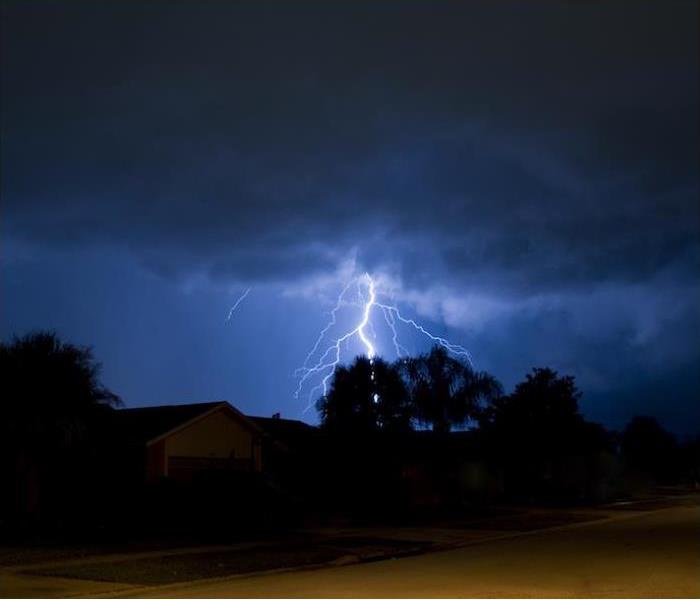 protect yourself and your loved ones during a storm
protect yourself and your loved ones during a storm
When the sky is clear and the weather is warm, it seems silly to think about thunderstorms ruining the fun—but unfortunately, this happens quite often on hot, humid days, as that creates the ideal condition for a sudden storm to form.
When storms catch people off-guard, they are often extra dangerous because people are not sure of what to do. With these tips, you can make sure you are prepared for a storm anywhere.
Make Sure You Are Prepared for a Storm Anywhere
Know your options for shelter. When you hear that a storm is a possibility and you are somewhere you can wait out the threat, this would be the ideal thing to do. That being said, when storms come up suddenly, this will not always be an option. You can set up shelter in your vehicle with the proper guidelines in mind, enabling you to wait out the storm anywhere you are.
Practice electrical safety. Claps of thunder are caused by lightning strikes, so any thunderstorm has the potential to cause lightning damage. If you are sheltering in a building, unplugging your electronics can help prevent damage from a power surge in case lightning strikes the building. Surge protectors are also a smart thing to invest in, both for your home and your office, in case you are not around when a storm starts.
Avoid direct contact with concrete. While concrete structures do have sturdiness going for them, they also pose risks when it comes to lightning strikes due to their metal framework. When lightning strikes a concrete building, the electricity can transfer from the metal and through the concrete, so be careful to not sit or lean against any concrete surfaces during a storm.
Stay indoors for at least 30 minutes. If you are interrupted by a thunderstorm, you will likely want to get back to your summer fun as soon as you can, but it is important to give yourself ample time in your shelter spot. Lightning can travel nearly 30 miles from the center of a storm cell, so experts recommend waiting at least 30 minutes before heading back outside.
If your home sustains damage due to a storm, you can count on us to help. Contact us at any hour to learn more about our storm restoration process.
Do I need flood insurance?
2/18/2020 (Permalink)
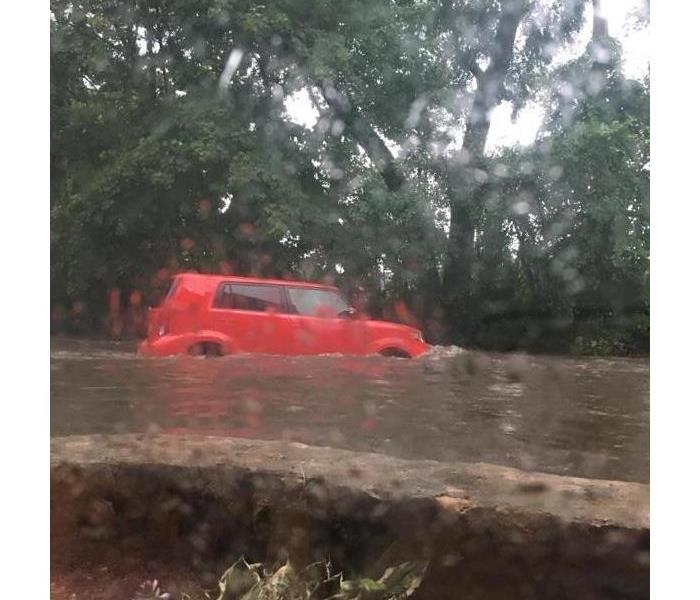 Heavy rain can flood low lying areas very quickly
Heavy rain can flood low lying areas very quickly
The fact is – any property can flood. Your home doesn’t have to be less than five feet of water from hurricane flood surges to suffer flood damage. Normal amounts of rainwater can drain under your home, and flood your basement or the lowest floor level, causing flood damage. This kind of flooding can cause mold, increase the risk of termites and cause electrical problems.
More than 75% of homeowners devastated by flooding unfortunately discover they should have had flood insurance. The sad thing, experts say, is that flood insurance is not that expensive – typically $450 to $600 a year for the average home. When you weigh the cost of flood insurance against replacing your entire home $100,000 to $500,000, it only makes sense to buy it, whether you believe you’ll need it or not. “People may say things like, ‘I live on a hill, and I don’t need flood insurance’.
Common reasons people give for not buying flood insurance include:
- “I’m not in a flood zone.”
- “I’m not anywhere near water.”
- “I’ll never need it, it's money wasted.”
- “My homeowner’s insurance will cover it.”
- “It’s not available.”
- “My realtor told me the property would never flood.”
If your home or business has been flooded, please call SERVPRO of Cambridge/Belmont (617) 864-7378
Did you know there are different types of lightning?
2/13/2020 (Permalink)
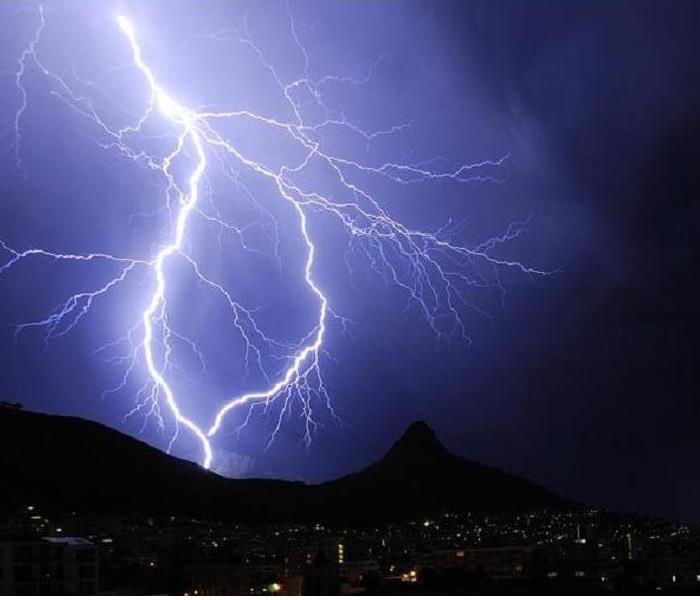 Lightning over the night sky
Lightning over the night sky
Lightning is an electrical discharge caused by imbalances between storm clouds and the ground, or within the clouds themselves. Most lightning occurs within the clouds.
"Sheet lightning" describes a distant bolt that lights up an entire cloud base. Other visible bolts may appear as bead, ribbon, or rocket lightning. During a storm, colliding particles of rain, ice, or snow inside storm clouds increase the imbalance between storm clouds and the ground, and often negatively charge the lower reaches of storm clouds. Objects on the ground, like steeples, trees, and the Earth itself, become positively charged—creating an imbalance that nature seeks to remedy by passing current between the two charges.
Lightning is extremely hot—a flash can heat the air around it to temperatures five times hotter than the sun’s surface. This heat causes surrounding air to rapidly expand and vibrate, which creates the pealing thunder we hear a short time after seeing a lightning flash.
Types of Lightning
Cloud-to-ground lightning bolts are a common phenomenon—about 100 strike Earth’s surface every single second—yet their power is extraordinary. Each bolt can contain up to one billion volts of electricity.
A typical cloud-to-ground lightning bolt begins when a step-like series of negative charges, called a stepped leader, races downward from the bottom of a storm cloud toward the Earth along a channel at about 200,000 mph (300,000 kph). Each of these segments is about 150 feet (46 meters) long.
When the lowermost step comes within 150 feet (46 meters) of a positively charged object, it is met by a climbing surge of positive electricity, called a streamer, which can rise up through a building, a tree, or even a person.
When the two connect, electrical current flows as negative charges fly down the channel towards earth and a visible flash of lightning streaks upward at some 200,000,000 mph (300,000,000 kph), transferring electricity as lightning in the process.
Some types of lightning, including the most common types, never leave the clouds but travel between differently charged areas within or between clouds. Other rare forms can be sparked by extreme forest fires, volcanic eruptions, and snowstorms. Ball lightning, a small, charged sphere that floats, glows, and bounces along oblivious to the laws of gravity or physics, still puzzles scientists.
About one to 20 cloud-to-ground lightning bolts is "positive lightning," a type that originates in the positively charged tops of storm clouds. These strikes reverse the charge flow of typical lightning bolts and are far stronger and more destructive. Positive lightning can stretch across the sky and strike "out of the blue" more than 10 miles from the storm cloud where it was born.
If you have water or fire damage, please call SERVPRO of Cambridge/Belmont (617) 864-7378
Cold weather preparation for your business
1/15/2020 (Permalink)
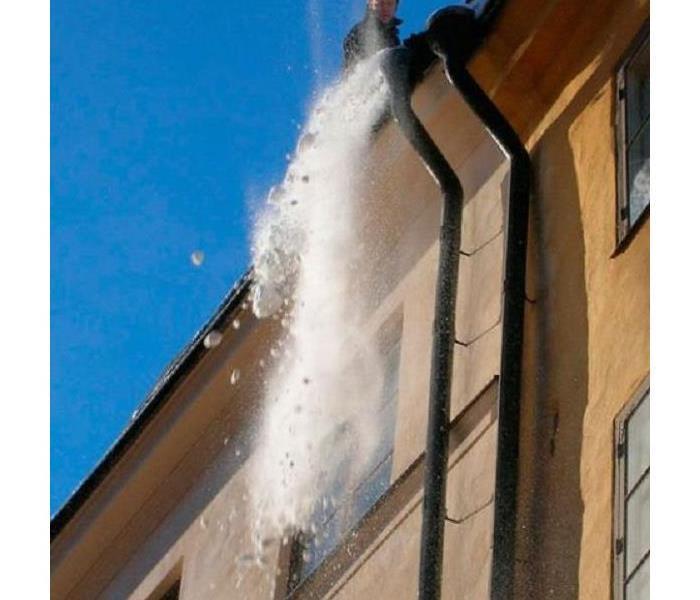 Make sure you clean the snow off the roof
Make sure you clean the snow off the roof
Cold Weather and Freeze Alert
Keep your heating systems operating
Keep your building and equipment warm. Heating systems are the lifeline of your business during cold conditions. If they fail, disaster could strike.
Immediate action required:
- All piping must be insulated. Install new and replace damaged insulation and don’t forget to examine your sprinkler system.
- Inspect all outside dampers for proper operation.
- Clear and protect all outside vents from ice and snow accumulation.
- Heat requires power. If generators are unavailable, make arrangements to obtain an electrical portable heating during outages.
Safeguard business equipment during power outages
Voltage surge protection is necessary at all times – especially during cold, freezing conditions. Severe weather can cause power loss and downed wires, disrupting your business’ power supply. When electricity is restored, the sudden surge of power can literally destroy the modem, high-tech equipment
Your business relies on.
Immediate action required:
- Unplug it. Anticipate voltage surges during severe weather. The best solution is equipment isolation – turn it off and unplug it. If you need to keep equipment running, installing surge protectors can provide protection.
- Inspect building. Close all windows, doors and outside dampers. Schedule regular building checks during storms and cold weather. Arrange for snow and ice removal, including the roof.
- Who’s responsible? Ensure accountability by designating personal responsibility for loss prevention. Business and building owners must work together with facilities and maintenance people.
- Provide emergency telephone numbers. Collect and distribute a list of emergency phone numbers and contacts, such as snow removal, heating system Repair Company, utility company, and the weather bureau.
- Anticipate flooding. Severe and cold weather can cause flooding. Move susceptible equipment or stock to an alternate location, where water cannot reach it.
- Always have cold-weather gear on hand. – Have plenty of gloves, hats, emergency blankets and flashlights available.
If you have water or fire issues, please call SERVPRO of Cambridge/Belmont (617) 864-7378
Ice dams in New Emgland
12/19/2019 (Permalink)
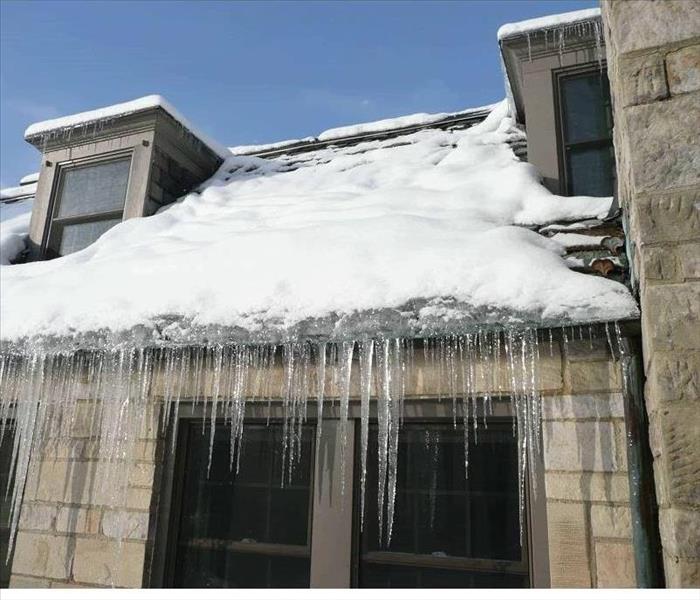 Snow melting causing ice dams and icicles
Snow melting causing ice dams and icicles
Ice dams form when melted snow refreezes at roof edges. Anyone who has lived in cold climates has seen ice dams. However, most of us don’t stop to understand why these ice bands form until they damage our homes.
Three things are required for an ice dam to form: snow, heat to melt the snow and cold to refreeze the melted snow into solid ice. Ice dams can form when as little as 1 or 2 inches of snow accumulates on a roof – if the roof is poorly insulated and air sealed, and the snowfall is followed by several days of sub-freezing temperatures. Ice dams develop as snow on the upper part of the roof melts. Water runs down the roof slope under the blanket of snow and refreezes into a band of ice at the roof’s edge creating a “dam”. Additional snow-melt pools against the dam and eventually leaks into the building through the roof or roof trim.
The reason ice-dams form along the roof’s lower edge, usually above the overhang, is straight-forward. The upper roof surface is at a temperature that is above freezing. And the lower part of the roof surface (along the eaves) is below freezing. The upper roof surface is located directly above the living space. Heat lost from the house warms this section of the roof, melting snow in this area. During periods of sub-freezing temperature the lower regions of the roof deck remain at sub-freezing ambient temperatures. Roof overhangs are not warmed by indoor heat-loss.
Deeper snow and cold temperatures increase the likelihood and size of ice dams. Every inch of snow that accumulates on the roof’s surface insulates the roof deck a little more, trapping more indoor heat beneath the roof deck and warming the roof sheathing. Each inch of snow has an R-value of approximately 0.5 – 1. The worst ice dams occur when deep snow accompanies cold weather. Here is an example to provide a sense of scale: A poorly insulated and unvented R-20 cathedral roof with 10 inches of snow can result with serious ice damming. In this example, 10 inches of snow adds ~between R-5 and R-10 to the roof system resulting in a total roof R of 25 – 30. The layer of snow holds indoor heat below the sheathing and could warm the roof sheathing above freezing in the area over the living space. If the inside temperature is 70 degrees and the outside 20 degrees (50 degree differential), the temperature of the roof sheathing would be between 5/25 and 10/30 of the way from 20 degrees toward 70 degrees. In other words, the roof should temperature should be between 30 and 37 degrees over the living space. Snow will probably melt under these conditions. Yet, the temperature of the roof over the unheated overhangs is 20 degrees, the same as the outdoor temperature. The melt water will freeze when it reaches that part of the roof. Deeper snow makes things worse. More insulation makes the situation better. You can do the math for a variety of snow depths and various indoor/outdoor temperature conditions to get a sense of how the variables are related. The trick is to keep the entire roof below freezing if possible. Roof venting helps and is discussed below.
If you have water damage from Ice Dams, please call SERVPRO of Cambridge/Belmont (617) 864-7378
Fast moving storm in Cambridge, MA
8/1/2019 (Permalink)
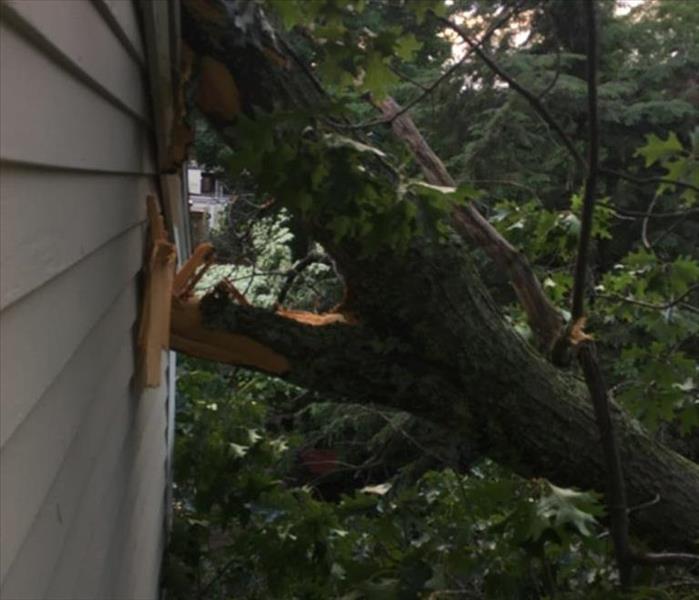 Tree branch from recent storm
Tree branch from recent storm
Last week’s microburst that occurred in the city of Cambridge resulted in about 50 limbs or branches down. Forestry crews are responding. There are also several wires down and loss of power in certain locations. The City Electrician, Eversource and SERVPRO of Cambridge/Belmont are responding. The above picture shows the damage that one of the downed trees caused. SERVPRO Of Cambridge/Belmont responded to a frantic call from the homeowner informing us that a tree came right through the kitchen ceiling. The SERVPRO technicians were at the Cambridge home in less than an hour. They cleaned up the debris and installed drying equipment.
To report a fallen tree or limb, call 617-349-3300.
To report a down wired, call 911 or 617-349-3300
To report loss of power, please call Eversourse at 1-800-592-2000
If you have had roof or water damage due to the Microburst please call SERVPRO of Cambridge/Belmont (617) 864-7378
A microburst is a small downdraft that moves in a way opposite to a tornado. Microbursts are found in strong thunderstorms. There are two types of microbursts within a thunderstorm: wet microbursts and dry microbursts. They go through three stages in their cycle, the downburst, outburst, and cushion stages. A microburst often has high winds that can knock over fully grown trees. They usually last from a couple of seconds to several minutes.
Floods in Belmont, MA
7/16/2019 (Permalink)
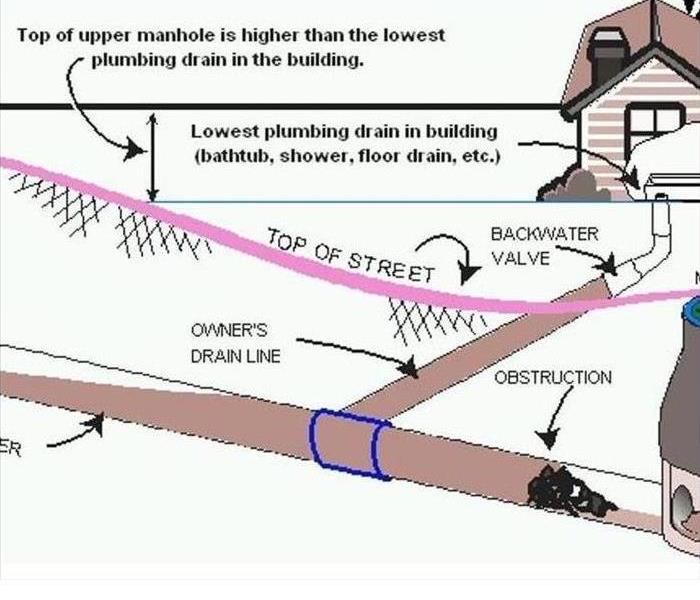 Diagram of a city sewer system
Diagram of a city sewer system
The heavy rains that occurred in the Cambridge/Belmont area caused not only flooding but also many sewage back- ups. The town & cities sewage system gets overwhelmed causing the sewage to flow into basements through toilets and sinks. When a storm drain suffers a partial or complete blockage, rain water gets trapped in the pipes and must go somewhere. Unfortunately, the only exit point is the pipe servicing your home that connects to the sewer line. With nowhere left to go it goes up through your pipe, pushing whatever refuse and filth it’s carrying into your basement and other areas of your home. Contact your local plumber to install a backwater valve to prevent this from happening to you! If your basement gets flooded or has sewage issues, please call SERVPRO of Cambridge/Belmont (617) 864-7378 to assist you. Did you know that SERVPRO of Cambridge/Belmont also helps Commercial and Industrial customers?
It's Lightning Season
7/16/2019 (Permalink)
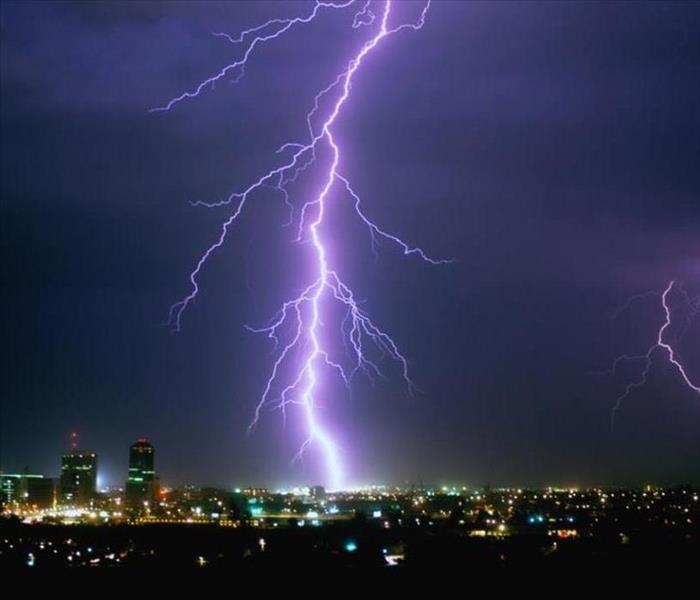 Lightning in the night sky
Lightning in the night sky
Lightning is an electrical discharge caused by imbalances between storm clouds and the ground, or within the clouds themselves. Most lightning occurs within the clouds.
"Sheet lightning" describes a distant bolt that lights up an entire cloud base. Other visible bolts may appear as bead, ribbon, or rocket lightning. During a storm, colliding particles of rain, ice, or snow inside storm clouds increase the imbalance between storm clouds and the ground, and often negatively charge the lower reaches of storm clouds. Objects on the ground, like steeples, trees, and the Earth itself, become positively charged—creating an imbalance that nature seeks to remedy by passing current between the two charges.
Lightning is extremely hot—a flash can heat the air around it to temperatures five times hotter than the sun’s surface. This heat causes surrounding air to rapidly expand and vibrate, which creates the pealing thunder we hear a short time after seeing a lightning flash.
Types of Lightning
Cloud-to-ground lightning bolts are a common phenomenon—about 100 strike Earth’s surface every single second—yet their power is extraordinary. Each bolt can contain up to one billion volts of electricity.
A typical cloud-to-ground lightning bolt begins when a step-like series of negative charges, called a stepped leader, races downward from the bottom of a storm cloud toward the Earth along a channel at about 200,000 mph (300,000 kph). Each of these segments is about 150 feet (46 meters) long.
When the lowermost step comes within 150 feet (46 meters) of a positively charged object, it is met by a climbing surge of positive electricity, called a streamer, which can rise up through a building, a tree, or even a person.
When the two connect, electrical current flows as negative charges fly down the channel towards earth and a visible flash of lightning streaks upward at some 200,000,000 mph (300,000,000 kph), transferring electricity as lightning in the process.
Some types of lightning, including the most common types, never leave the clouds but travel between differently charged areas within or between clouds. Other rare forms can be sparked by extreme forest fires, volcanic eruptions, and snowstorms. Ball lightning, a small, charged sphere that floats, glows, and bounces along oblivious to the laws of gravity or physics, still puzzles scientists.
About one to 20 cloud-to-ground lightning bolts is "positive lightning," a type that originates in the positively charged tops of storm clouds. These strikes reverse the charge flow of typical lightning bolts and are far stronger and more destructive. Positive lightning can stretch across the sky and strike "out of the blue" more than 10 miles from the storm cloud where it was born.
If you have had damage from a lightning strike, please call SERVPRO of Cambridge/Belmont (617) 864-7378
Last week's Microburst causes damage in the Cambridge/Belmont area
7/15/2019 (Permalink)
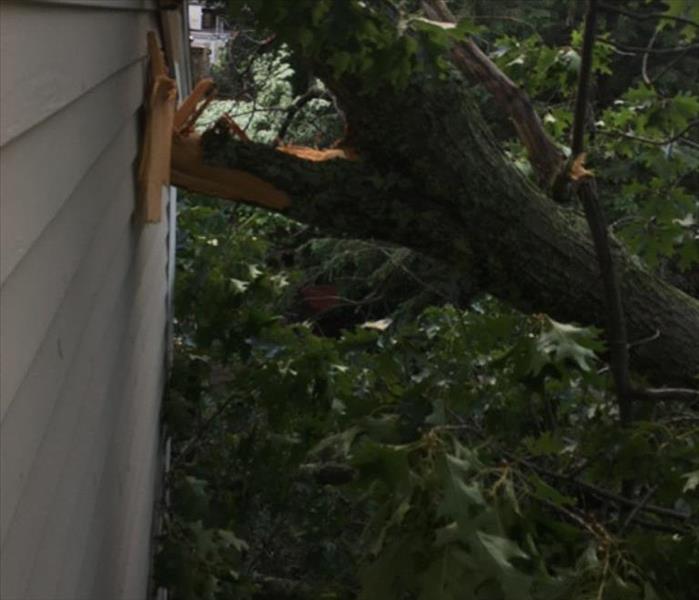 Downed Tree from microburst
Downed Tree from microburst
Last week’s microburst that occurred in the city of Cambridge resulted in about 50 limbs or branches down. Forestry crews are responding. There are also several wires down and loss of power in certain locations. The City Electrician, Eversource and SERVPRO of Cambridge/Belmont are responding. The above picture shows the damage that one of the downed trees caused. SERVPRO Of Cambridge/Belmont responded to a frantic call from the homeowner informing us that a tree came right through the kitchen ceiling. The SERVPRO technicians were at the Cambridge home in less than an hour. They cleaned up the debris and installed drying equipment.
To report a fallen tree or limb, call 617-349-3300.
To report a down wired, call 911 or 617-349-3300
To report loss of power, please call Eversourse at 1-800-592-2000
If you have had roof or water damage due to the Microburst please call SERVPRO of Cambridge/Belmont (617) 864-7378
A microburst is a small downdraft that moves in a way opposite to a tornado. Microbursts are found in strong thunderstorms. There are two types of microbursts within a thunderstorm: wet microbursts and dry microbursts. They go through three stages in their cycle, the downburst, outburst, and cushion stages. A microburst often has high winds that can knock over fully grown trees. They usually last from a couple of seconds to several minutes.
Emergency services after a storm
7/15/2019 (Permalink)
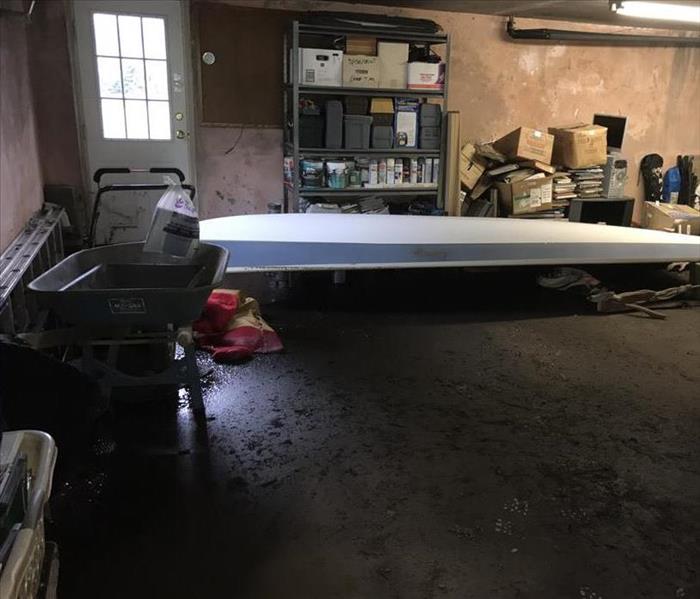 Flooded garage due to a storm
Flooded garage due to a storm
24 Hour Emergency Water Damage Service
SERVPRO of Cambridge/Belmont is available 24 hours a day for water emergencies, large or small. When you are dealing with water damage, immediate action is crucial. A delay of just a few hours can greatly increase the severity of the water damage.
We Answer the Phone Ready to Help
Call SERVPRO of Cambridge/Belmont Today - (617) 864-7378
We understand that when you call us, you may be feeling confused, stressed, and vulnerable. You need an expert to guide you through this crisis. SERVPRO of Cambridge/Belmont has the specific water damage training and experience to help you through this tough time. We specialize in water damage restoration—in fact, it's the cornerstone of our business.
What to Expect
When you call, we will ask several questions regarding your water damage emergency. These questions will help us determine what equipment and resources to bring, including how many trained SERVPRO Professionals may be needed.
Our SERVPRO Representative will ask several questions:
Your name and contact information
Your insurance information (if applicable)
The street address of the water-damaged home or business
When did the flooding or water damage occur?
What caused the water damage (if known)?
Is there electricity available (on-site)?
About SERVPRO of Cambridge/Belmont
SERVPRO of Cambridge/Belmont specializes in the cleanup and restoration of residential and commercial property after a fire, smoke or water damage event. Our staff is highly trained in property damage restoration. From initial and ongoing training at SERVPRO’s corporate training facility to regular IICRC-industry certification, rest assured our staff is equipped with the knowledge to restore your property.
Storm hits Belmont, Cambridge area
7/1/2019 (Permalink)
 Drying equipment doing the work
Drying equipment doing the work
The rain came quickly and only lasted a few minutes but it created significant damage to the Cambridge/Belmont area. Diane, the office manager, arrived in her office Monday morning. Diane felt her feet squish as she walked across the wet carpet. The rain was so overwhelming that the roof drain overflowed causing water to pour down into the office. She made a call to SERVPRO of Cambridge/Belmont and explained that she needed her office to be operational as it was their busy season. The SERVPRO technicians arrived within the hour. Melvin, the crew chief, tested walls and ceilings for excessive moisture, extracted the water from the carpets and left equipment to dry the wet walls, ceiling and carpet. Melvin came back the next day to monitor the drying progress. The walls and carpet were still wet. He came back again the next day tested the areas with a moisture meter and he found all areas to be dry. The crew shampooed the carpet and everything was back to normal in the office. If you have water or fire damage in your business, please call SERVPRO of Cambridge/Belmont (617) 864-7378
The rain came quickly and only lasted a few minutes but it created significant damage to the Cambridge/Belmont area. Diane, the office manager, arrived in her office Monday morning. Diane felt her feet squish as she walked across the wet carpet. The rain was so overwhelming that the roof drain overflowed causing water to pour down into the office. She made a call to SERVPRO of Cambridge/Belmont and explained that she needed her office to be operational as it was their busy season. The SERVPRO technicians arrived within the hour. Melvin, the crew chief, tested walls and ceilings for excessive moisture, extracted the water from the carpets and left equipment to dry the wet walls, ceiling and carpet. Melvin came back the next day to monitor the drying progress. The walls and carpet were still wet. He came back again the next day tested the areas with a moisture meter and he found all areas to be dry. The crew shampooed the carpet and everything was back to normal in the office. If you have water or fire damage in your business, please call SERVPRO of Cambridge/Belmont (617) 864-7378
The rain came quickly and only lasted a few minutes but it created significant damage to the Cambridge/Belmont area. Diane, the office manager, arrived in her office Monday morning. Diane felt her feet squish as she walked across the wet carpet. The rain was so overwhelming that the roof drain overflowed causing water to pour down into the office. She made a call to SERVPRO of Cambridge/Belmont and explained that she needed her office to be operational as it was their busy season. The SERVPRO technicians arrived within the hour. Melvin, the crew chief, tested walls and ceilings for excessive moisture, extracted the water from the carpets and left equipment to dry the wet walls, ceiling and carpet. Melvin came back the next day to monitor the drying progress. The walls and carpet were still wet. He came back again the next day tested the areas with a moisture meter and he found all areas to be dry. The crew shampooed the carpet and everything was back to normal in the office. If you have water or fire damage in your business, please call SERVPRO of Cambridge/Belmont (617) 864-7378
What is lightning?
8/2/2018 (Permalink)
 Lightning contarsted with the night sky
Lightning contarsted with the night sky
Lightning is an electrical discharge caused by imbalances between storm clouds and the ground, or within the clouds themselves. Most lightning occurs within the clouds.
"Sheet lightning" describes a distant bolt that lights up an entire cloud base. Other visible bolts may appear as bead, ribbon, or rocket lightning. During a storm, colliding particles of rain, ice, or snow inside storm clouds increase the imbalance between storm clouds and the ground, and often negatively charge the lower reaches of storm clouds. Objects on the ground, like steeples, trees, and the Earth itself, become positively charged—creating an imbalance that nature seeks to remedy by passing current between the two charges.
Lightning is extremely hot—a flash can heat the air around it to temperatures five times hotter than the sun’s surface. This heat causes surrounding air to rapidly expand and vibrate, which creates the pealing thunder we hear a short time after seeing a lightning flash.
Types of Lightning
Cloud-to-ground lightning bolts are a common phenomenon—about 100 strike Earth’s surface every single second—yet their power is extraordinary. Each bolt can contain up to one billion volts of electricity.
A typical cloud-to-ground lightning bolt begins when a step-like series of negative charges, called a stepped leader, races downward from the bottom of a storm cloud toward the Earth along a channel at about 200,000 mph (300,000 kph). Each of these segments is about 150 feet (46 meters) long.
When the lowermost step comes within 150 feet (46 meters) of a positively charged object, it is met by a climbing surge of positive electricity, called a streamer, which can rise up through a building, a tree, or even a person.
When the two connect, electrical current flows as negative charges fly down the channel towards earth and a visible flash of lightning streaks upward at some 200,000,000 mph (300,000,000 kph), transferring electricity as lightning in the process.
Some types of lightning, including the most common types, never leave the clouds but travel between differently charged areas within or between clouds. Other rare forms can be sparked by extreme forest fires, volcanic eruptions, and snowstorms. Ball lightning, a small, charged sphere that floats, glows, and bounces along oblivious to the laws of gravity or physics, still puzzles scientists.
About one to 20 cloud-to-ground lightning bolts is "positive lightning," a type that originates in the positively charged tops of storm clouds. These strikes reverse the charge flow of typical lightning bolts and are far stronger and more destructive. Positive lightning can stretch across the sky and strike "out of the blue" more than 10 miles from the storm cloud where it was born.
If you have had damage from a lightning strike, please call SERVPRO of Cambridge/Belmont (617) 864-7378
Should I Waterproof My Basement?
8/2/2018 (Permalink)
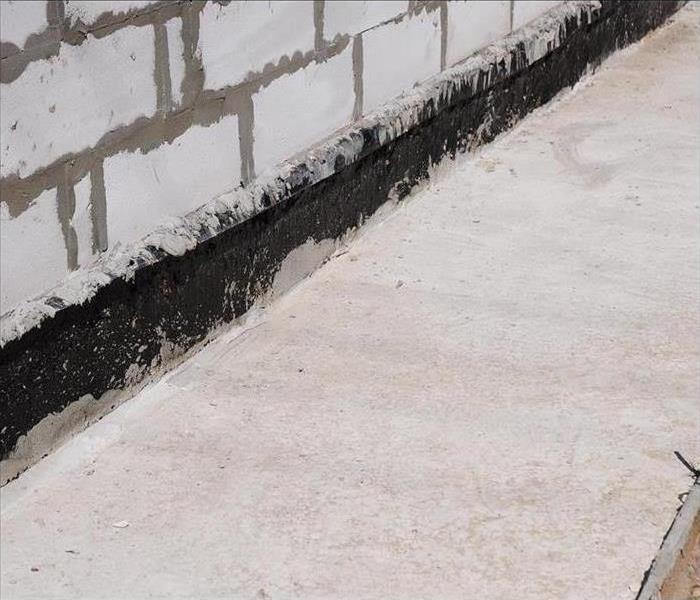 Sealed basement wall
Sealed basement wall
If your basement smells wet or musty, one might be curious about why this may be happening and what the root of it is. Many companies advertise about waterproofing basements walls. Is it really possible to dry out a basement simply by sealing the walls?
Yes, it is possible to make sure you basement stay dry and not musty. SERVPRO of Cambridge/Belmont (617-864-7378) can help. We are here to make sure that your basement stays dry especially after a tragedy. We are professionals that will get your space back to looking “like it never happened”.
There are four types of Interior Waterproofing:
1.Concrete waterproofing coatings:
2.Silicate based concrete sealers,
3.Waterproof paint
4.Plastic sheets and panels
These are all solutions that can help prevent water from getting into your basement and have the ability to have a finished basement and add value to your house. If you have water damage let SERVPRO of Cambridge/Belmont (617-864-7378) help.
Tuesday's storm caused widespread flooding
7/18/2018 (Permalink)
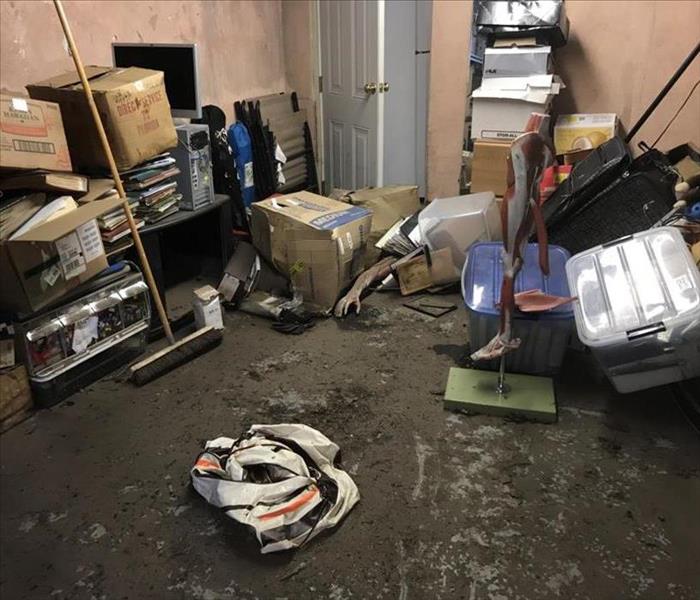 The storm flooded this Cambridge home
The storm flooded this Cambridge home
The heat and humidity Tuesday will give way to potentially severe thunderstorms in the afternoon in Massachusetts, forecasters say.
“A line of strong thunderstorms is expected to develop in northwest Massachusetts around noon and then progress slowly southeastward across most of southern New England this afternoon and evening,” the National Weather Service wrote. “Any storms will be capable of producing 1 to 2 inches of rain in less than an hour.”
The National Weather Service said localized flash flooding and damaging winds are concerns with the sweeping storms.
The Flash Flood Watch has been expanded to include the Boston and Providence corridor. With widespread showers and thunderstorms today, 1"-2" of rain is expected in a short period of time. Some places could see 2"-4" with rainfall rates around 2"/hr. This could lead to localized flash flooding, especially in urban areas.
The strongest storms are forecast in western and northern Massachusetts, and the storms are expected to weaken as they approach southeastern Massachusetts and Rhode Island.
If your home or business was affected by yesterday’s storm, please call SERVPRO of Cambridge/Belmont (617) 864-7378 to assist you.
The dangers of a lightning strike
7/17/2018 (Permalink)
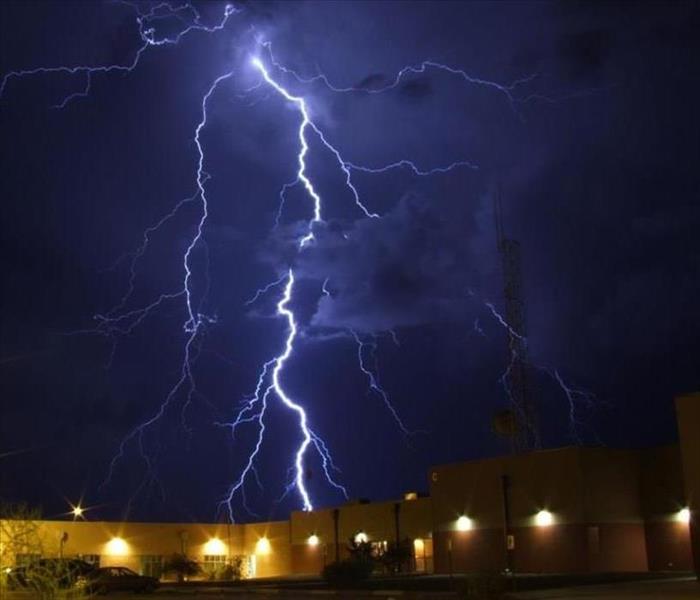 Spectacular picture of lightning lighting up the sky
Spectacular picture of lightning lighting up the sky
Lightning is not only spectacular, it’s dangerous. About 2,000 people are killed worldwide by lightning each year. Hundreds more survive strikes but suffer from a variety of lasting symptoms, including memory loss, dizziness, weakness, numbness, and other life-altering ailments. Strikes can cause cardiac arrest and severe burns, but 9 of every 10 people survive. The average American has about a 1 in 5,000 chance of being struck by lightning during a lifetime.
Lightning's extreme heat will vaporize the water inside a tree, creating steam that may blow the tree apart. Cars are havens from lightning—but not for the reason that most believe. Tires conduct current, as do metal frames that carry a charge harmlessly to the ground.
Many houses are grounded by rods and other protection that conduct a lightning bolts electricity harmlessly to the ground. Homes may also be inadvertently grounded by plumbing, gutters, or other materials. Grounded buildings offer protection, but occupants who touch running water or use a landline phone may be shocked by conducted electricity.
If your home or business is struck by lightning, please call SERVPRO of Cambridge/Belmont (617) 864-7378
It's Hurricane Season
7/16/2018 (Permalink)
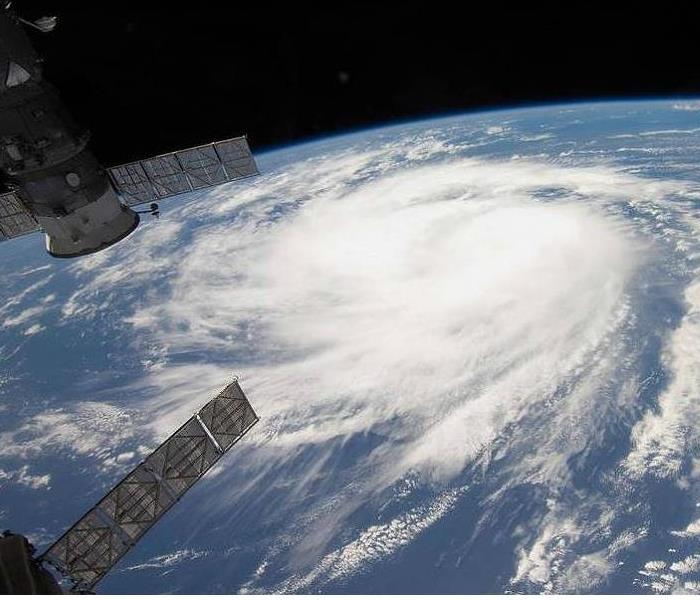 Satellite photo of a hurricane
Satellite photo of a hurricane
As the 2018 Atlantic hurricane season begins, scientists are worried that U.S. coastal communities could face more super storms with winds, storm surges and rainfall so intense that current warning categories don't fully capture the threat.
This year's forecast is about average and much more subdued than last summer's hyperactive season turned out to be, partly due to cooler ocean temperatures in the tropical Atlantic, as well as a nascent El Niño pattern. But that doesn't mean an individual storm won't blow up to exceptional strength, as Andrew did before striking Florida in 1992, an otherwise relatively quiet year.
Heat trapped by the increasing concentration of greenhouse gases in the atmosphere is raising the chances of that happening, said Penn State climate scientist Michael Mann.
A new review of global data on hurricanes shows that since 1980, the number of storms with winds stronger than 200 kilometers per hour (124 mph, or a strong Category 3) have doubled, and those with winds stronger than 250 kilometers per hour (155 mph) have tripled.
If a storm hits your area, please call SERVPRO of Cambridge/Belmont (617) 864-7378 to assist you with the cleanup.
Causes of Sewage backups in basements
7/16/2018 (Permalink)
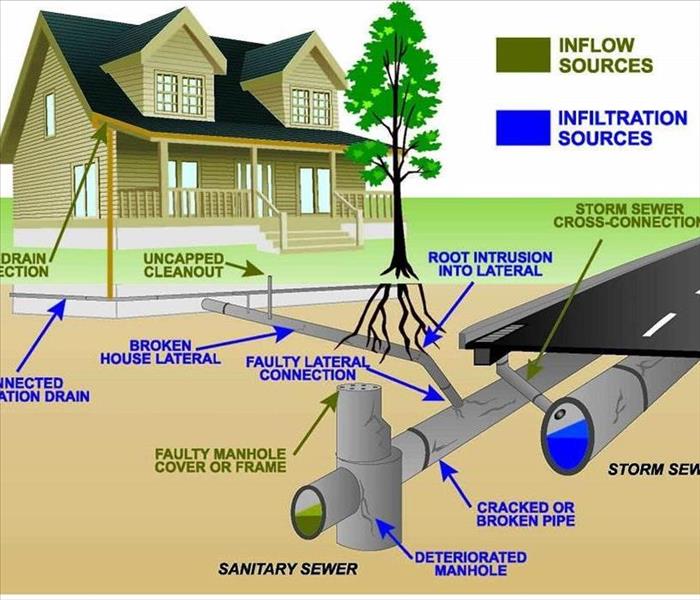 Diagram of a sewage system
Diagram of a sewage system
Heavy rains that occurred in the Cambridge/Belmont area caused not only flooding but also many sewage backups. The town & cities sewage system gets overwhelmed causing the sewage to flow into basements through toilets and sinks. When a storm drain suffers a partial or complete blockage, rain water gets trapped in the pipes and must go somewhere. Unfortunately, the only exit point is the pipe servicing your home that connects to the sewer line. With nowhere left to go it goes up through your pipe, pushing whatever refuse and filth it’s carrying into your basement and other areas of your home. Contact your local plumber to install a backwater valve to prevent this from happening to you! If your basement gets flooded or has sewage issues, please call SERVPRO of Cambridge/Belmont (617) 864-7378 to assist you. Did you know that SERVPRO of Cambridge/Belmont also helps Commercial and Industrial customers?
Recent Storm in Cambridge, MA
7/2/2018 (Permalink)
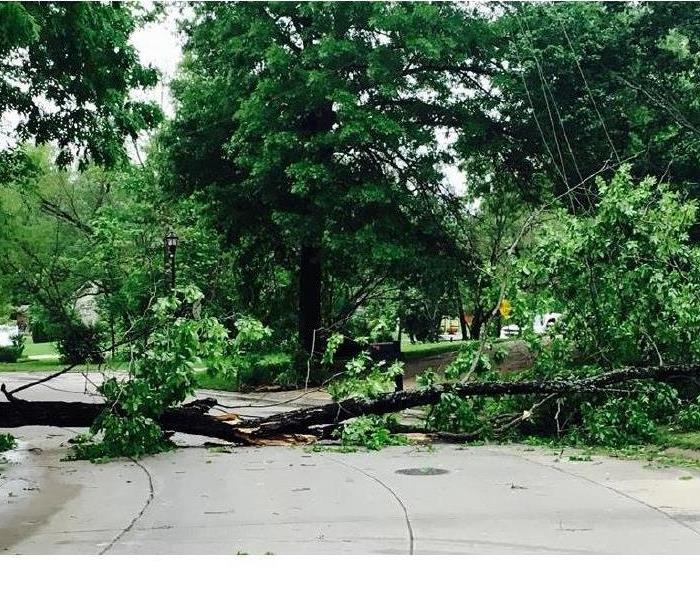 Downed tree as a result of the recent storm
Downed tree as a result of the recent storm
Yesterday’s microburst that occurred in the city of Cambridge resulted in about 50 limbs or branches down. Forestry crews are responding. There are also several wires down and loss of power in certain locations. The City Electrician, Eversource and SERVPRO of Cambridge/Belmont are responding. The above picture shows the damage that one of the downed trees caused. SERVPRO Of Cambridge/Belmont responded to a frantic call from the homeowner informing us that a tree came right through the kitchen ceiling. The SERVPRO technicians were at the Cambridge home in less than an hour. They cleaned up the debris and installed drying equipment.
To report a fallen tree or limb, call 617-349-3300.
To report a down wired, call 911 or 617-349-3300
To report loss of power, please call Eversourse at 1-800-592-2000
If you have had roof or water damage due to the Microburst please call SERVPRO of Cambridge/Belmont (617) 864-7378
A microburst is a small downdraft that moves in a way opposite to a tornado. Microbursts are found in strong thunderstorms. There are two types of microbursts within a thunderstorm: wet microbursts and dry microbursts. They go through three stages in their cycle, the downburst, outburst, and cushion stages. A microburst often has high winds that can knock over fully grown trees. They usually last from a couple of seconds to several minutes.
Early-season storms one indicator of active Atlantic hurricane season ahead
8/15/2017 (Permalink)
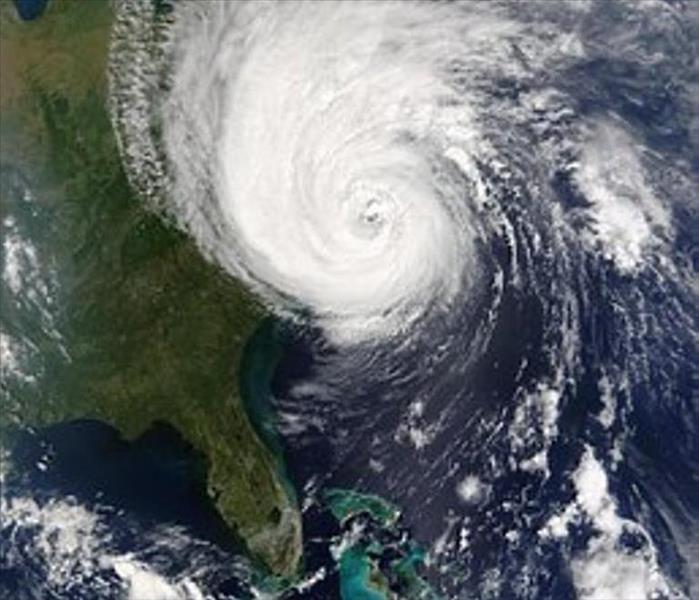 Satellite picture of a hurricane in the Atlantic
Satellite picture of a hurricane in the Atlantic
Today NOAA issued the scheduled update for its 2017 hurricane season outlook. Forecasters are now predicting a higher likelihood of an above-normal season, and they increased the predicted number of named storms and major hurricanes. The season has the potential to be extremely active, and could be the most active since 2010.
Forecasters now say there is a 60-percent chance of an above-normal season (compared to the May prediction of 45 percent chance), with 14-19 named storms (increased from the May predicted range of 11-17) and 2-5 major hurricanes (increased from the May predicted range of 2-4). A prediction for 5-9 hurricanes remains unchanged from the initial May outlook.
“We’re now entering the peak of the season when the bulk of the storms usually form,” said Gerry Bell, Ph.D., lead seasonal hurricane forecaster at NOAA’s Climate Prediction Center. “The wind and air patterns in the area of the tropical Atlantic and Caribbean where many storms develop are very conducive to an above-normal season. This is in part because the chance of an El Nino forming, which tends to prevent storms from strengthening, has dropped significantly from May.”
Bell noted other factors that point to an above-normal season include warmer waters across the tropical Atlantic than models previously predicted and higher predicted activity from available models.
In just the first nine weeks of this season there have been six named storms, which is half the number of storms during an average six-month season and double the number of storms that would typically form by early August. An average Atlantic hurricane season, which runs from June 1-November 30, produces 12 named storms, of which six become hurricanes, including three major hurricanes.
“Today’s updated outlook underscores the need for everyone to know their true vulnerabilities to storms and storm surge,” said FEMA Administrator Brock Long. “As we enter the height of hurricane season, it’s important for everyone to know who issues evacuation orders in their community, heed the warnings, update their insurance and have a preparedness plan.”
The updated outlook is based on the current and evolving atmospheric and oceanic conditions, the most recent model predictions, and pre-and early-season storm activity. The numbers announced today include the season activity to-date. The Atlantic basin has seen six named storms (Arlene in April; Bret and Cindy in June; Don and Emily in July; and Franklin in August). Two of these storms, Cindy and Emily, struck the United States. Cindy made landfall on June 22 at the Louisiana-Texas border and caused heavy rain, inland flooding and multiple tornado outbreaks. Emily made landfall on July 31 in Anna Maria Island, Florida. Franklin is predicted to make landfall in Mexico overnight as a hurricane.
Today’s update also decreases the chance of a near-normal season from 35 percent to 30 percent, and a below-normal season from 20 percent to only 10 percent from the initial outlook issued in May.
As we move into the peak of hurricane season, when hurricanes are most frequent and at their strongest, NOAA urges coastal residents to make sure they have their hurricane preparedness plans in place and to monitor the latest forecasts.
If you are affected by a hurricane, please call SERVPRO of Cambridge/Belmont (617) 864-7378
Lightning Science: Five Ways Lightning Strikes People
8/9/2017 (Permalink)
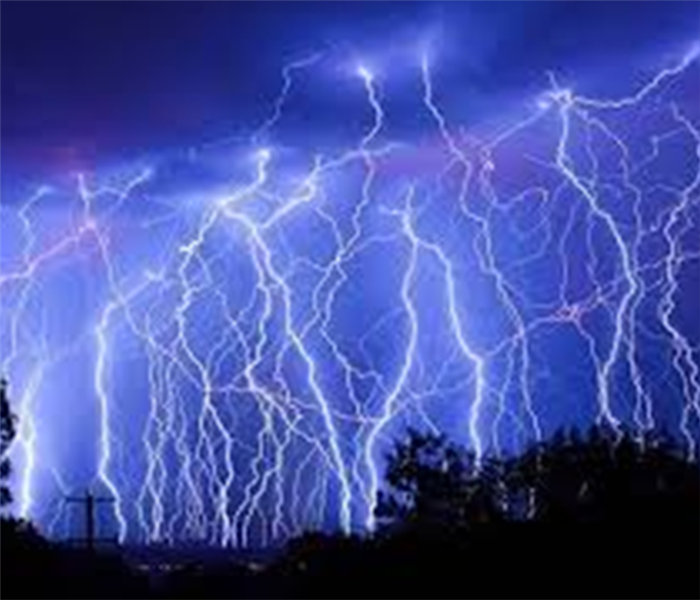 Lightning filling up the sky
Lightning filling up the sky
Direct Strike
A person struck directly by lightning becomes a part of the main lightning discharge channel. Most often, direct strikes occur to victims who are in open areas. Direct strikes are not as common as the other ways people are struck by lightning, but they are potentially the most deadly. In most direct strikes, a portion of the current moves along and just over the skin surface (called flashover) and a portion of the current moves through the body--usually through the cardiovascular and/or nervous systems. The heat produced when lightning moves over the skin can produce burns, but the current moving through the body is of greatest concern. While the ability to survive any lightning strike is related to immediate medical attention, the amount of current moving through the body is also a factor.
Side Flash
A side flash (also called a side splash) occurs when lightning strikes a taller object near the victim and a portion of the current jumps from taller object to the victim. In essence, the person acts as a “short circuit” for some of energy in the lightning discharge. Side flashes generally occur when the victim is within a foot or two of the object that is struck. Most often, side flash victims have taken shelter under a tree to avoid rain or hail.
Ground Current
When lightning strikes a tree or other object, much of the energy travels outward from the strike along the ground surface. This is known as the ground current. Anyone outside near a lightning strike is potentially a victim of ground current. In addition, ground current can travels in garage floors with conductive materials. Because the ground current affects a much larger area than the other causes of lightning casualties, the ground current causes the most lightning deaths and injuries. Ground current also kills many farm animals. Typically, the lightning enters the body at the contact point closest to the lightning strike, travels through the cardiovascular and/or nervous systems, and exits the body at the contact point farthest from the lightning. The greater the distance between contact points, the greater the potential for death or serious injury. Because large farm animals have a relatively large body-span, ground current from a nearby lightning strike is often fatal to livestock.
Conduction
Lightning can travel long distances in wires or other metal surfaces. Metal does not attract lightning, but it provides a path for the lightning to follow. Most indoor lightning casualties and some outdoor casualties are due to conduction. Whether inside or outside, anyone in contact with anything connected to metal wires, plumbing, or metal surfaces that extend outside is at risk. This includes anything that plugs into an electrical outlet, water faucets and showers, corded phones, and windows and doors.
Streamers
While not as common as the other types of lightning injuries, people caught in “streamers” are at risk of being killed or injured by lightning. Streamers develop as the downward-moving leader approaches the ground. Typically, only one of the streamers makes contact with the leader as it approaches the ground and provides the path for the bright return stroke; however, when the main channel discharges, so do all the other streamers in the area. If a person is part of one of these streamers, they could be killed or injured during the streamer discharge even though the lightning channel was not completed between the cloud and the upward streamer.
If you are a homeowner, property or facilities manager and you are affected by lightning please call SERVPRO of Cambridge/Belmont (617)864-7378 to assist you
NOAA METEOROLOGIST BOB CASE, THE MAN WHO NAMED THE PERFECT STORM
8/3/2017 (Permalink)
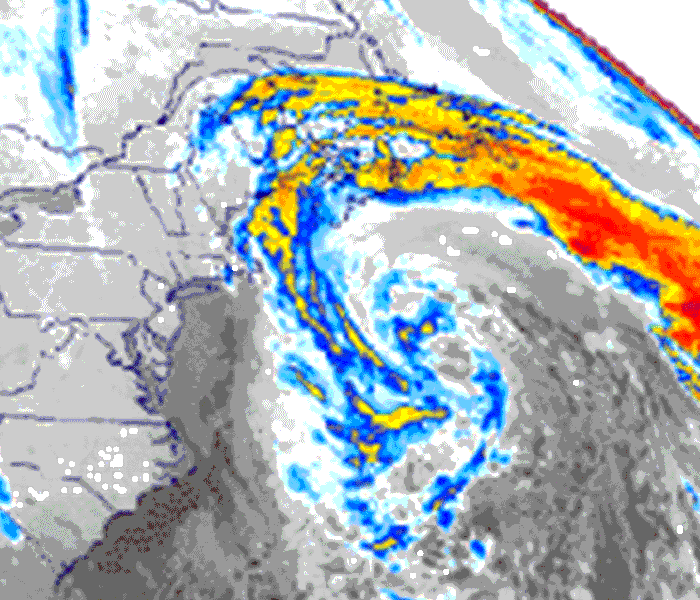 Radar picture of the storm.
Radar picture of the storm.
June 16, 2000 — The conditions were "perfect" for a monstrous storm, a meteorological time bomb that would explode in the northern Atlantic Ocean creating waves ten stories high and imperiling the New England fleet. This was the assessment of Bob Case, a NOAA National Weather Service meteorologist at the Boston, Mass. forecast office, who, with his weather service colleagues in late October 1991, began warning the public of a storm that would take on epic proportions.
"It was an unprecedented set of circumstances," the now-retired weatherman said. "A strong disturbance associated with a cold front moved along the U.S.-Canadian border on October 27 and passed through New England pretty much without incident. At the same time, a huge high pressure system was forecast to build over southeast Canada. When a low pressure system along the front moved into the Maritimes southeast of Nova Scotia, it began to intensify due to the cold dry air introduced from the north," according to Case.
"These circumstances alone, could have created a strong storm," Case said. "But then, like throwing gasoline on a fire, a dying hurricane Grace delivered immeasurable tropical energy to create the perfect storm."
With all of the contributing factors coming together at just the right time, in less than 24 hours, the storm exploded to epic proportions and then headed toward the coast," the meteorologist said, adding that if any of the components were out of sync, the epic storm would not have happened."
While NOAA's National Weather Service was warning of a storm of huge proportions, New England was enjoying unusually nice weather for late October—a beautiful late autumn day with plenty of sunshine and a northeast breeze, Case explained. "There was a certain amount of skepticism to our warnings of what turned out to be one of the North Atlantic's most powerful storms."
One of Case's colleagues at the Boston office was Walt Drag, a forecaster who shared his passion for meteorology. "Walt had a good handle on it early and the office put out warnings of a big storm," Case said. "This is an area well known for breeding tremendous storms and we could see it coming together on the satellite images and computer model information from the national center in Washington."
"You knew something bad was going to happen," said Ross Dickman another NWS meteorologist who worked the storm. "I remember seeing waves crashing over the seawall at Winthrop (Mass.) sending spray a hundred feet into the air. It was incredible."
An interesting aspect of the huge system was its retrograde motion not away from the New England Coast, but toward it. "It was difficult for us to convey the magnitude of the event to the public," Case said. "Not too many people could fathom–or believe–100-foot waves and hurricane force winds, 70-80 miles-per-hour plus, in a storm that was heading from east to west. "You were looking at a set of meteorological circumstances that come together maybe every 50-100 years."
Flooded basements during heavy rain storms
7/24/2017 (Permalink)
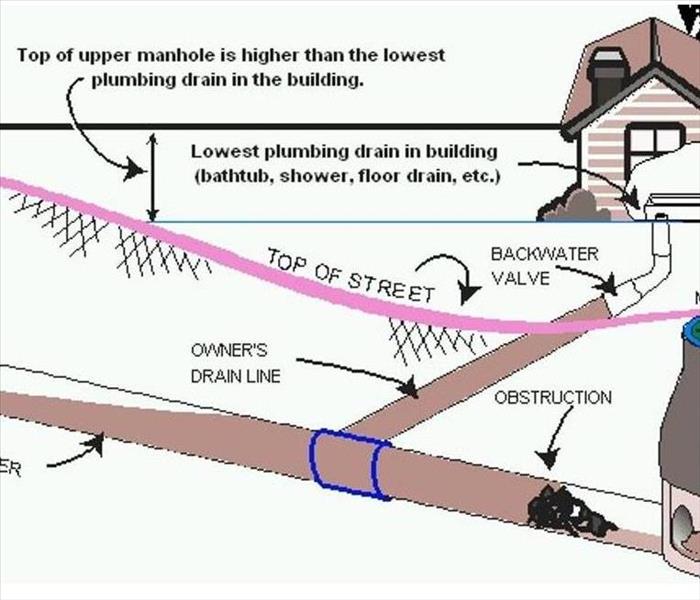 Diagram of Public sewer system
Diagram of Public sewer system
The heavy rains that occurred in the Cambridge/Belmont area caused not only flooding but also many sewage back ups. The town & cities sewage system gets overwhelmed causing the sewage to flow into basements through toilets and sinks. When a storm drain suffers a partial or complete blockage, rain water gets trapped in the pipes and must go somewhere. Unfortunately, the only exit point is the pipe servicing your home that connects to the sewer line. With nowhere left to go it goes up through your pipe, pushing whatever refuse and filth it’s carrying into your basement and other areas of your home. Contact your local plumber to install a backwater valve to prevent this from happening to you! If your basement gets flooded or has sewage issues, please call SERVPRO of Cambridge/Belmont (617) 864-7378 to assist you. Did you know that SERVPRO of Cambridge/Belmont also helps Commercial and Industrial customers?
Wednesday night's storm causes flooding in Cambridge, MA
7/14/2017 (Permalink)
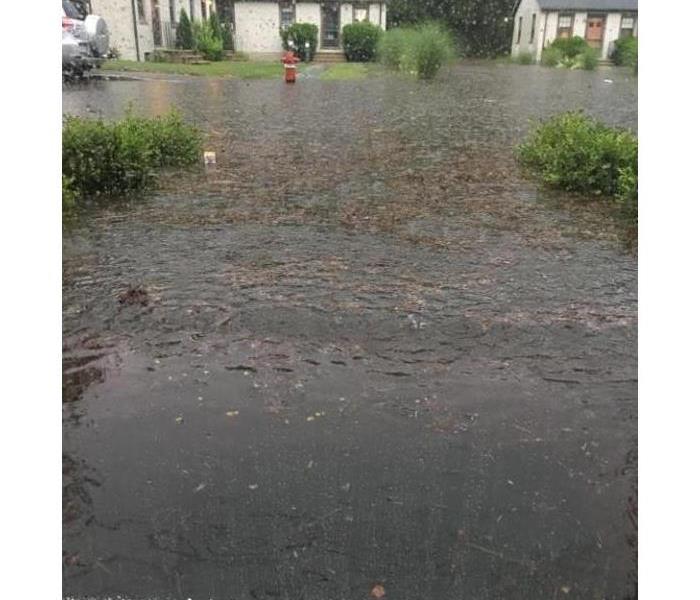 Storm caused flooding
Storm caused flooding
Wednesday night’s storm caused street flooding, flooded basements and sewage to be backed up into basements. Local restoration companies like SERVPRO of Cambridge/Belmont were busy helping homeowners and businesses with storm related issues. Storm related events that cause flooding or sewage back up problems are not typically covered by insurance. Specialty policies or endorsements must be in place prior to a potential claim.
Precautions to prevent future flooding or damage
Certain preventive measures can be taken to prevent a City sewer from backing up into your basement during or after a heavy rain. Some are low cost, while others require corrective plumbing work.
- Make sure sewer trap plugs are fit tightly on the house trap. Replace old ill-fitting sewer trap plugs with fit-all plugs.
- If the house sewer line is solely for sanitary use (not for any rain water flow) a back-water check valve can be installed in front (the street side) of the house trap.
- If the house sewer in question is also for storm water (rain water) flow and there are plumbing fixtures in the basement (such as a toilet, shower, or a sink) backwater check valves can be installed for individual plumbing fixtures.
What is a backwater check valve?
A backwater check valve is a self-operating valve that only allows for water flow in one direction. If properly maintained it will prevent water from flowing in the opposite direction thereby preventing a sewer backup from a public sewer system.
A backwater check valve should be cleaned every 6 months to a year, a task easily performed by a non-professional by removing a few screws. No special tools or skills are required for maintenance on a backwater check valve.
This relatively low-cost installation can prevent heavy rain from causing damage to your house ever again. If your basement gets flooded or has sewage back up, please call SERVPRO of Cambridge/Belmont (617) 864-7378 to assist you.
Microburst downs trees in Cambridge, MA
6/14/2017 (Permalink)
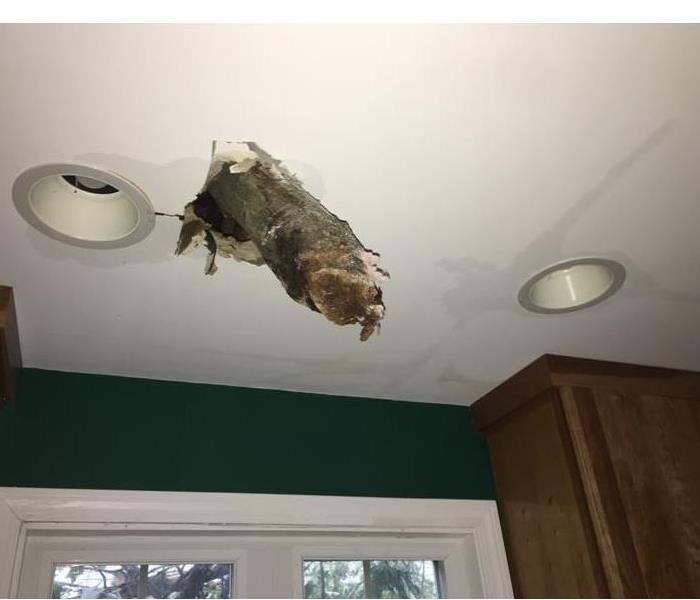 Tree pierces kitchen ceiling
Tree pierces kitchen ceiling
Yesterday’s microburst that occurred in the city of Cambridge resulted in about 50 limbs or branches down. Forestry crews are responding. There are also several wires down and loss of power in certain locations. The City Electrician, Eversource and SERVPRO of Cambridge/Belmont are responding. The above picture shows the damage that one of the downed trees caused. SERVPRO Of Cambridge/Belmont responded to a frantic call from the homeowner informing us that a tree came right through the kitchen ceiling. The SERVPRO technicians were at the Cambridge home in less than an hour. They cleaned up the debris and installed drying equipment.
To report a fallen tree or limb, call 617-349-3300.
To report a down wired, call 911 or 617-349-3300
To report loss of power, please call Eversourse at 1-800-592-2000
If you have had roof or water damage due to the Microburst please call SERVPRO of Cambridge/Belmont (617) 864-7378
A microburst is a small downdraft that moves in a way opposite to a tornado. Microbursts are found in strong thunderstorms. There are two types of microbursts within a thunderstorm: wet microbursts and dry microbursts. They go through three stages in their cycle, the downburst, outburst, and cushion stages. A microburst often has high winds that can knock over fully grown trees. They usually last from a couple of seconds to several minutes.






 24/7 Emergency Service
24/7 Emergency Service






































